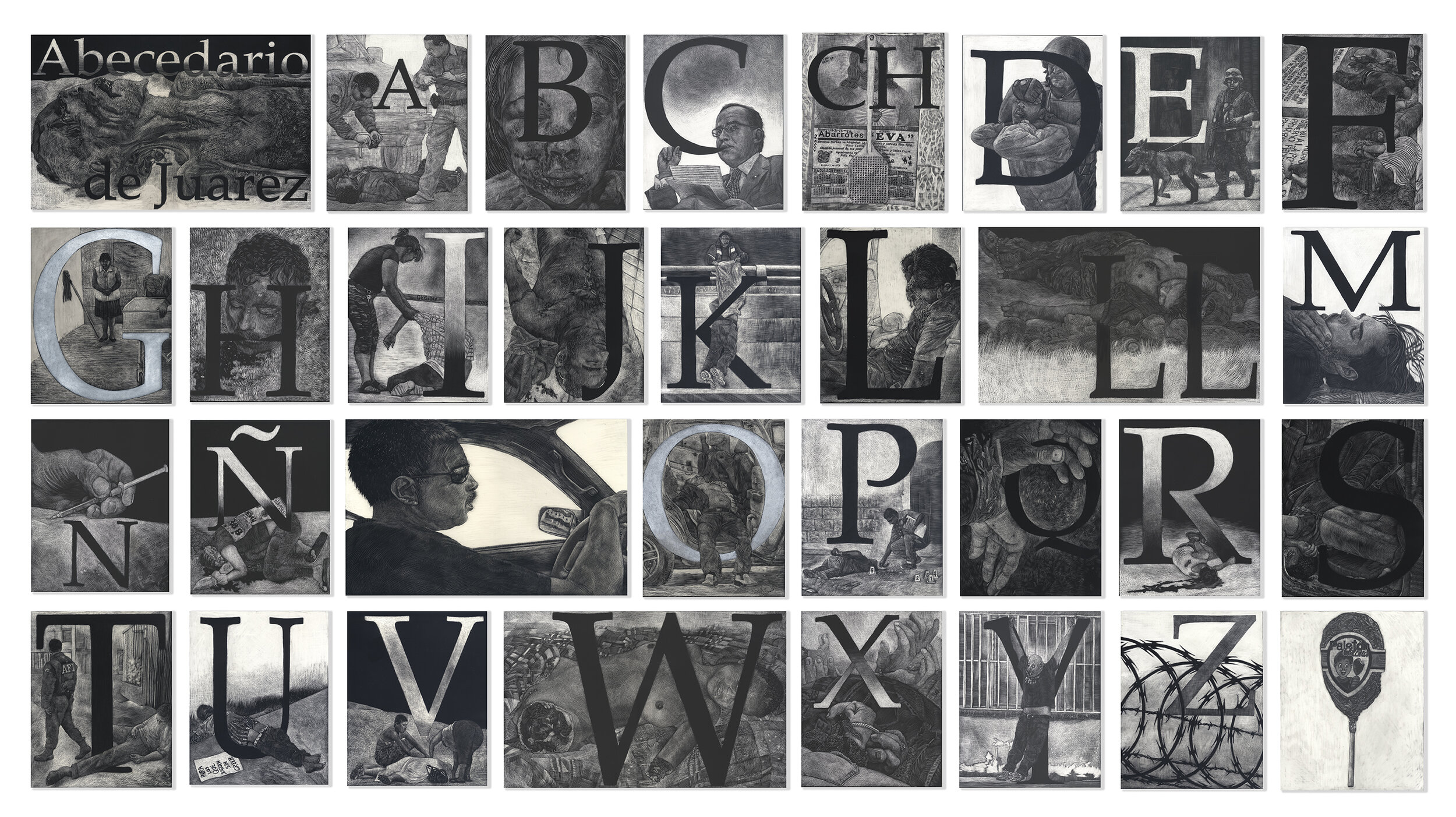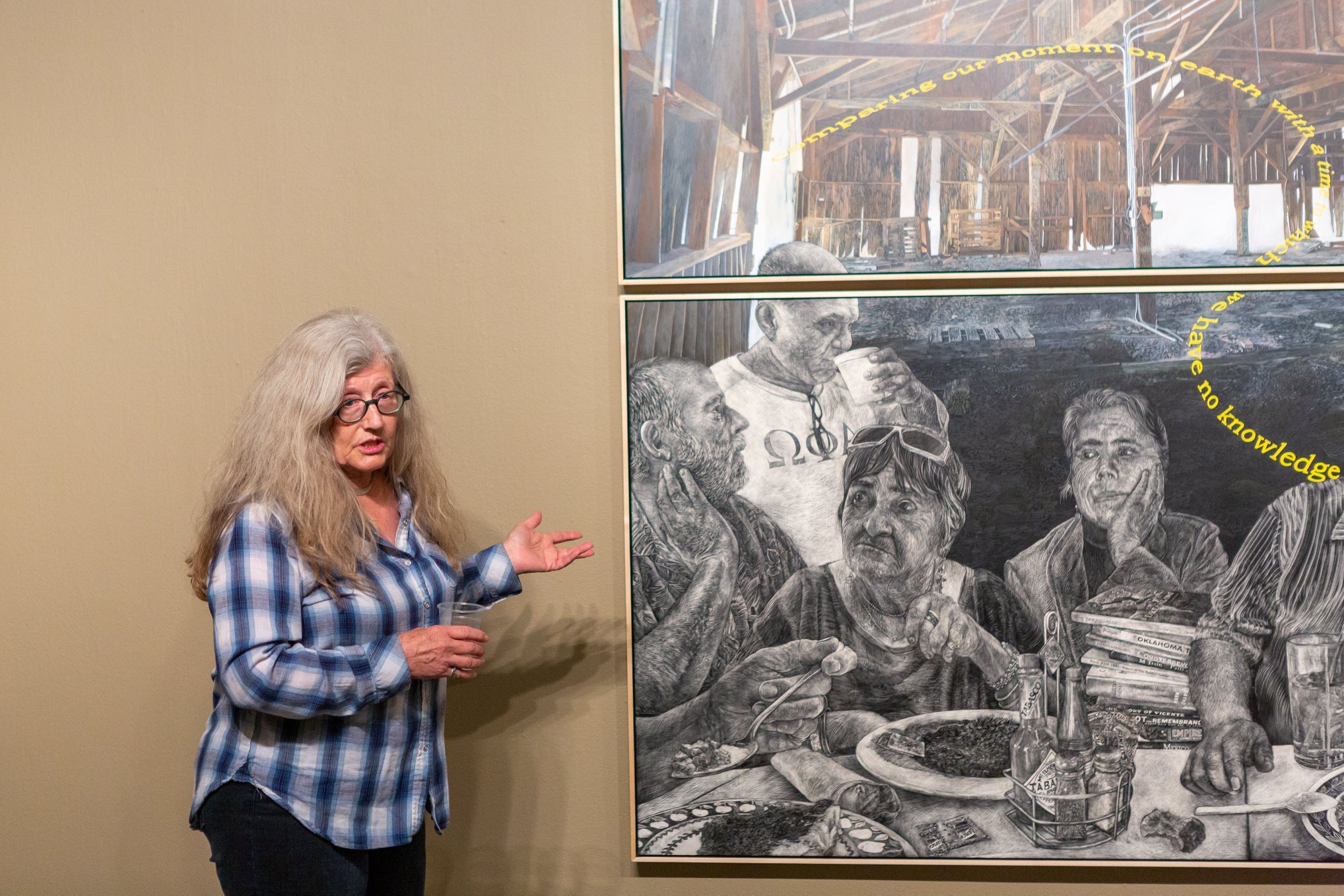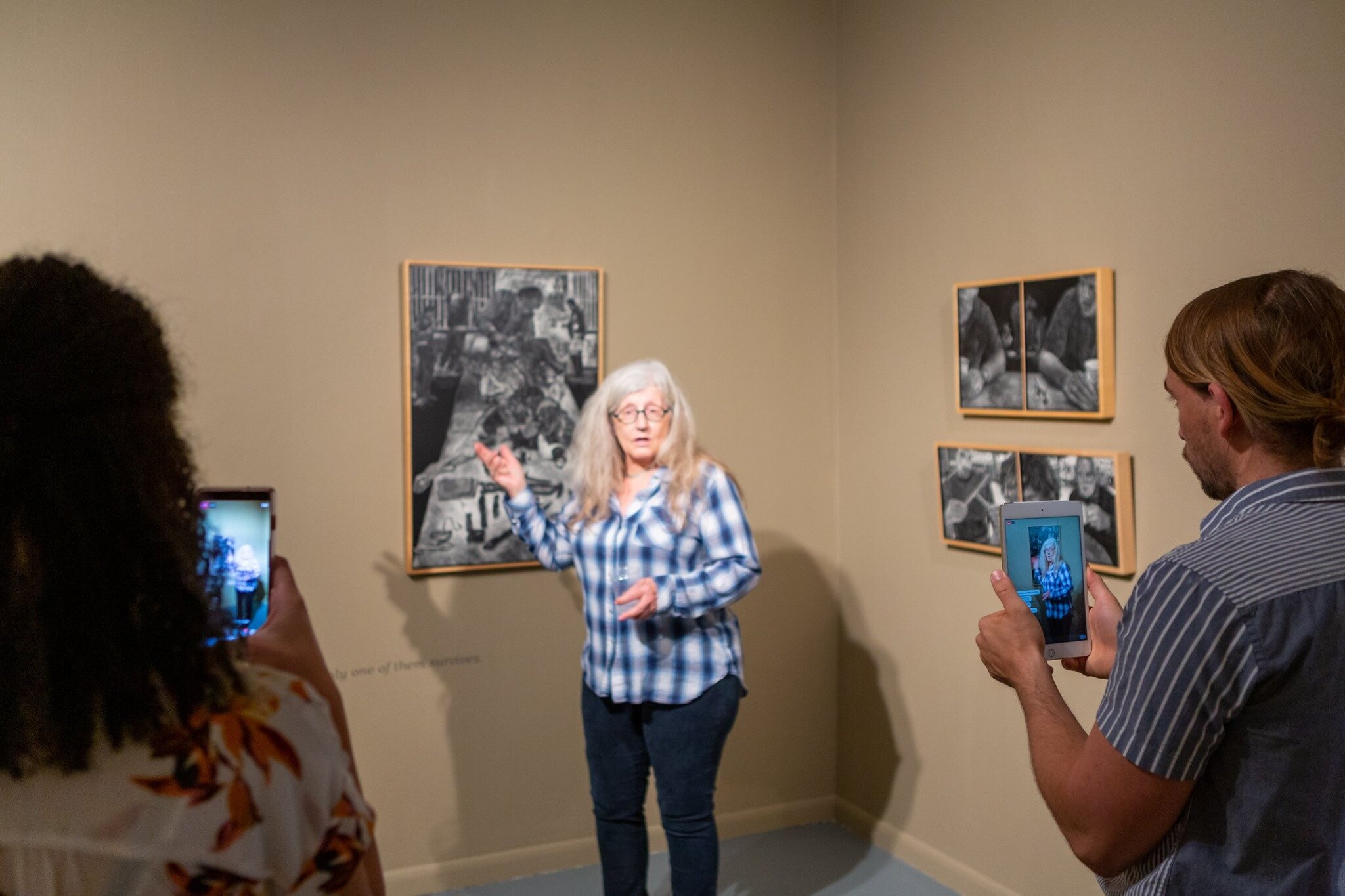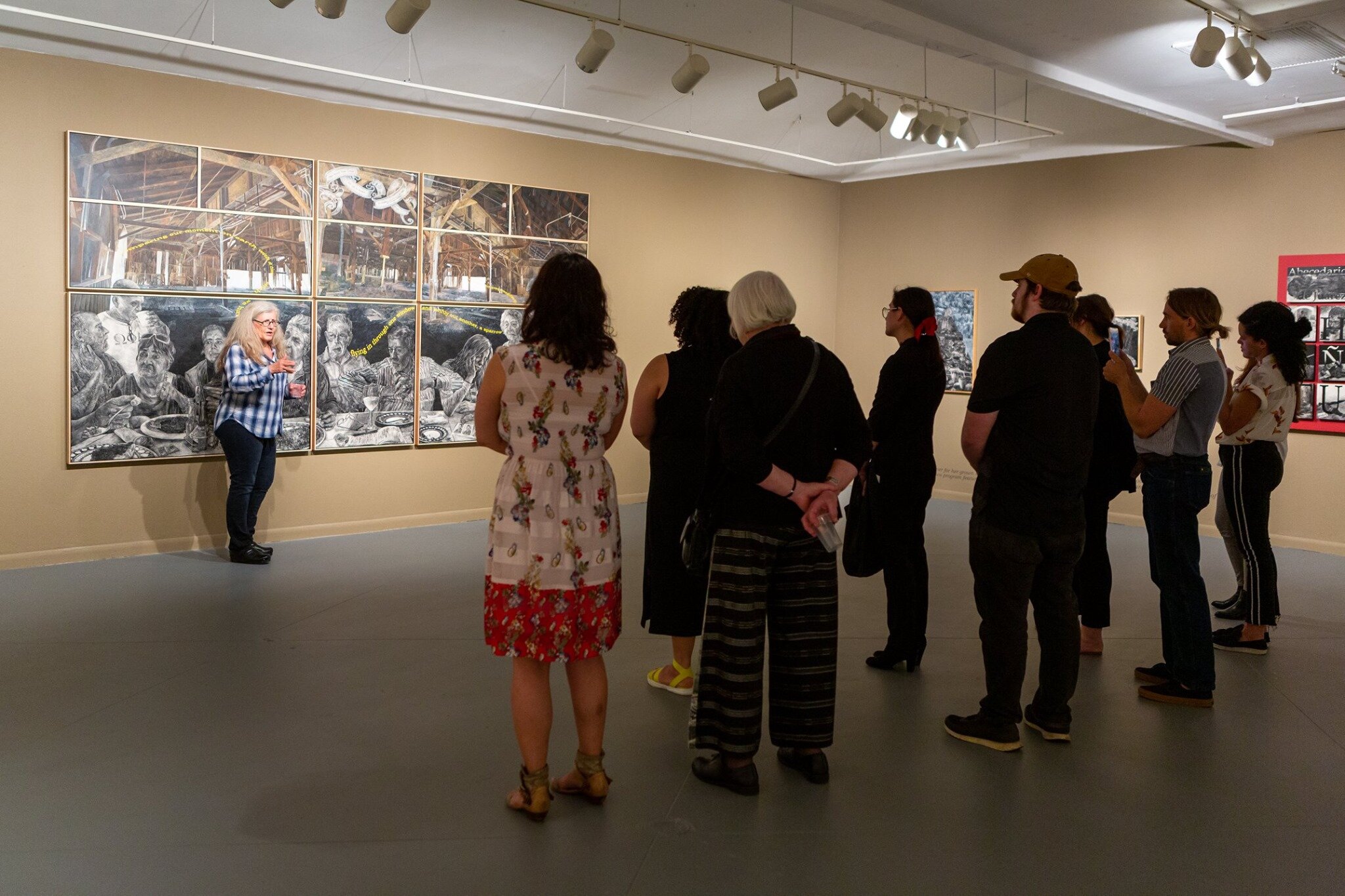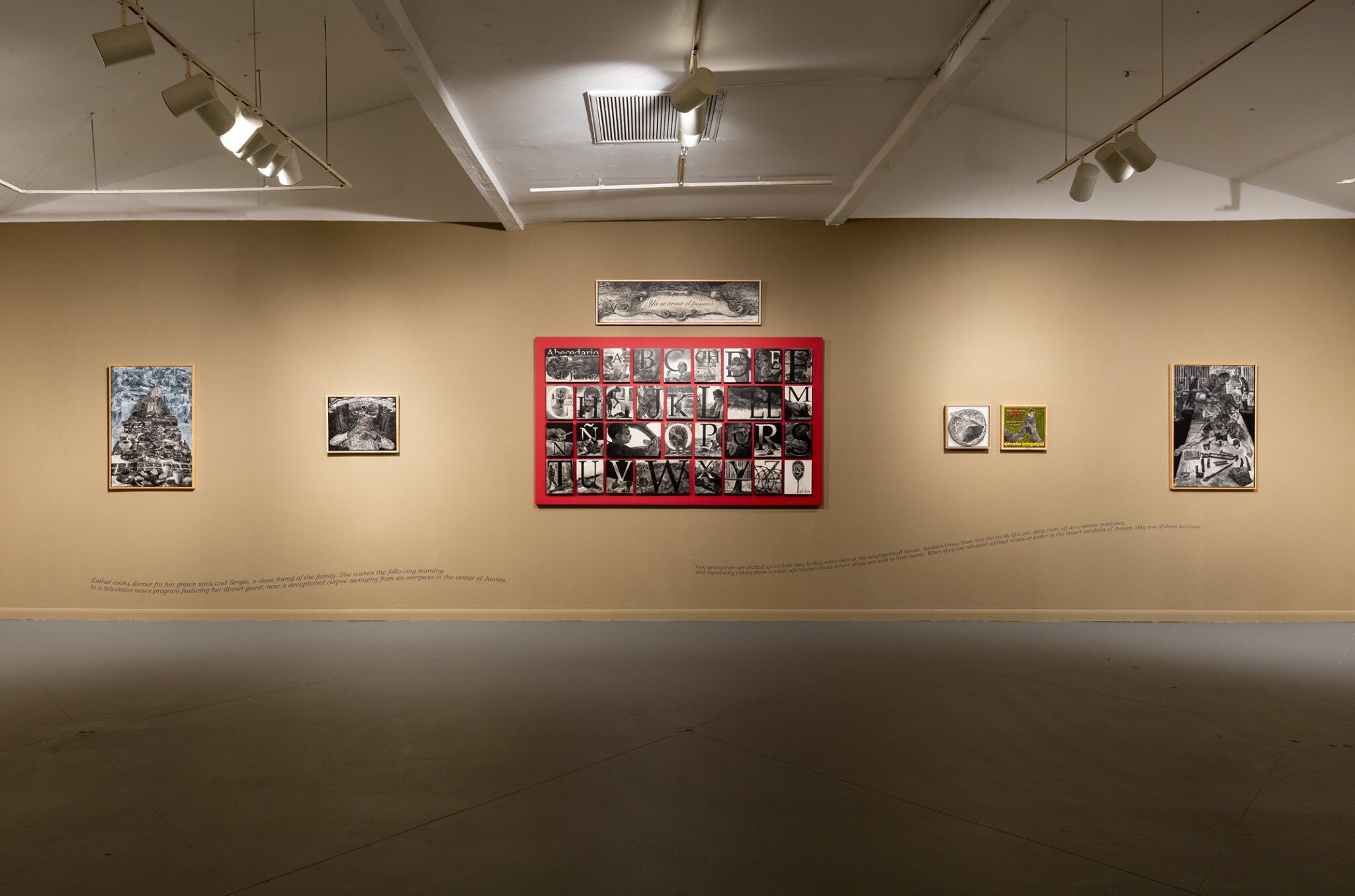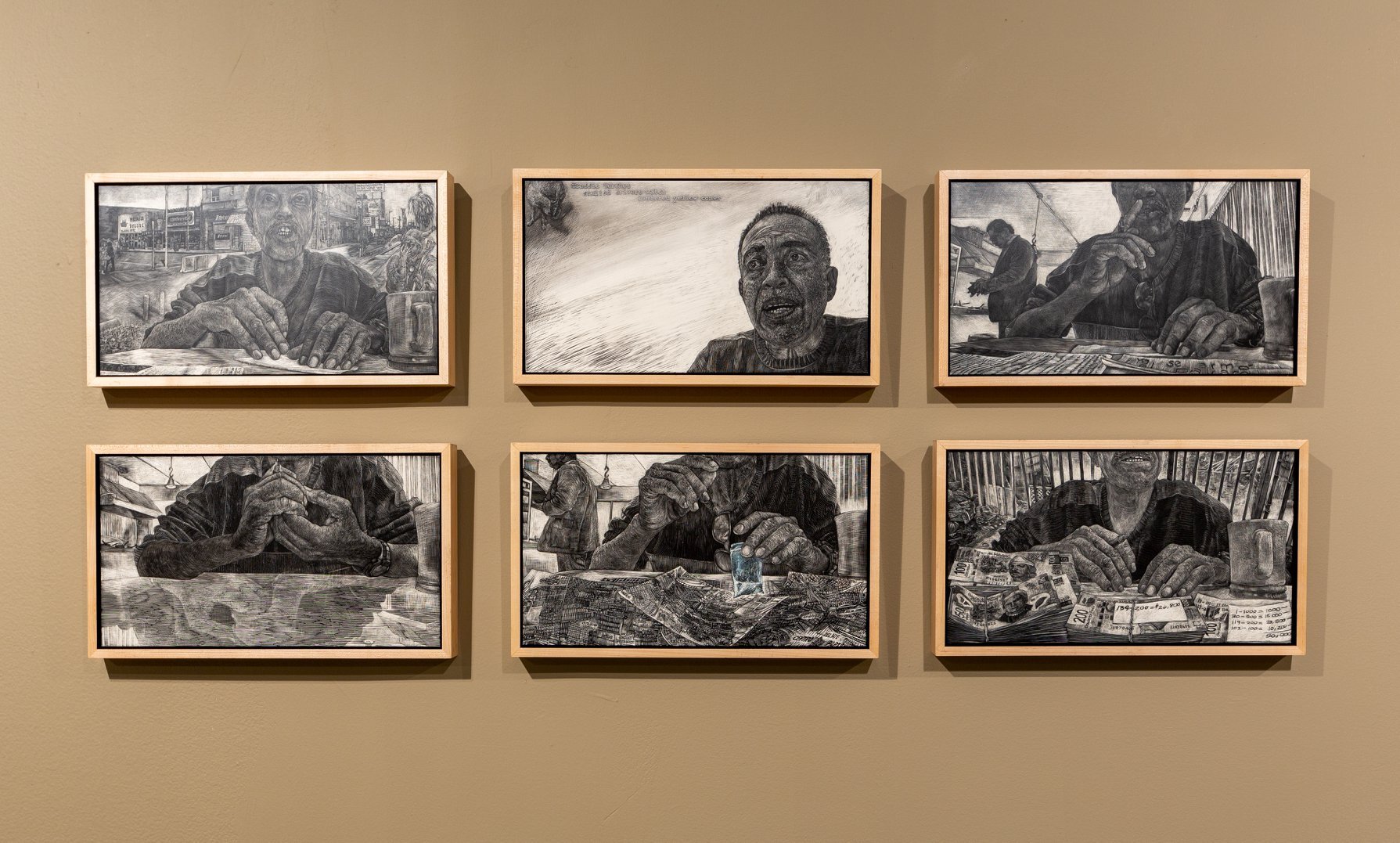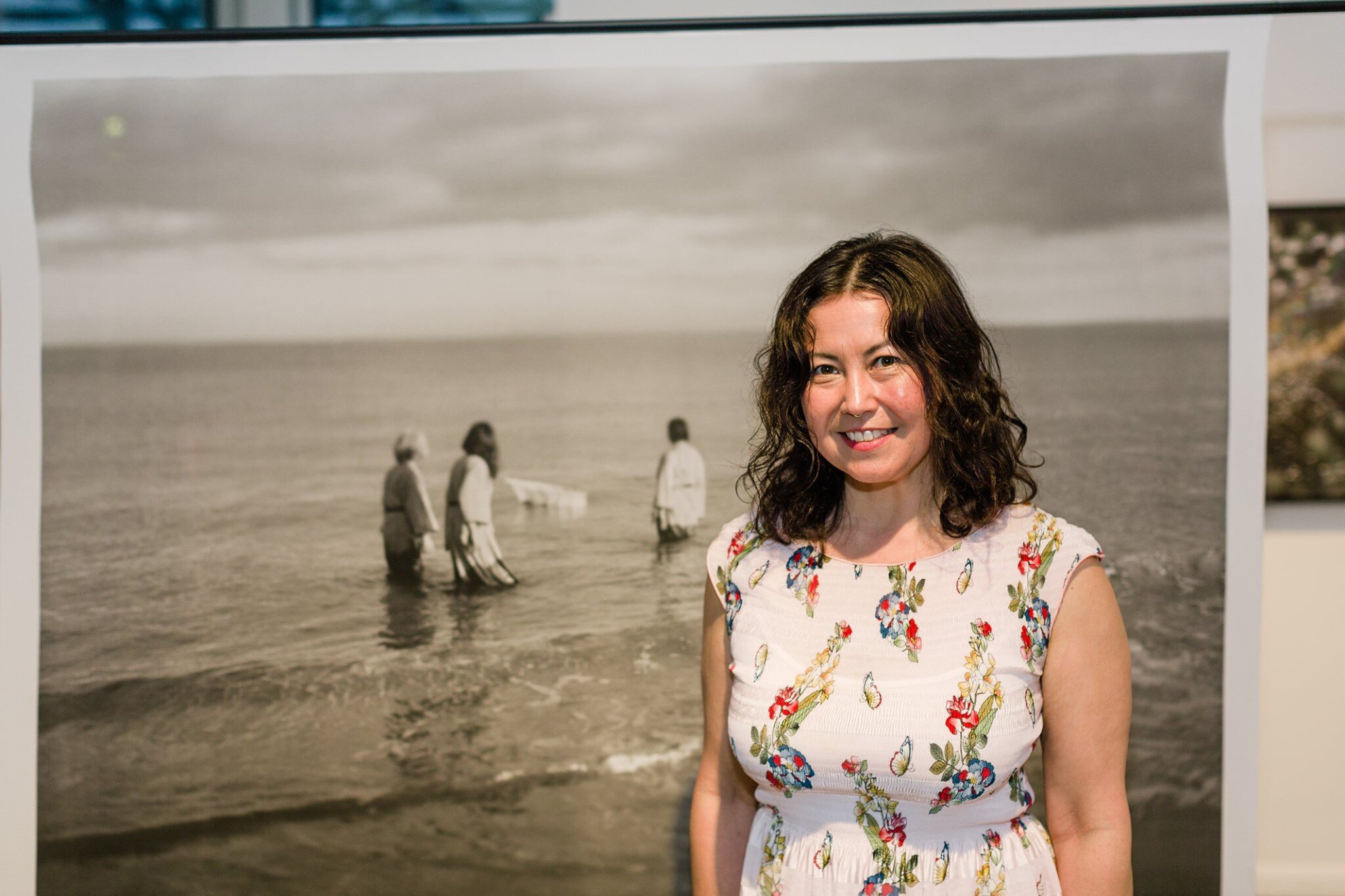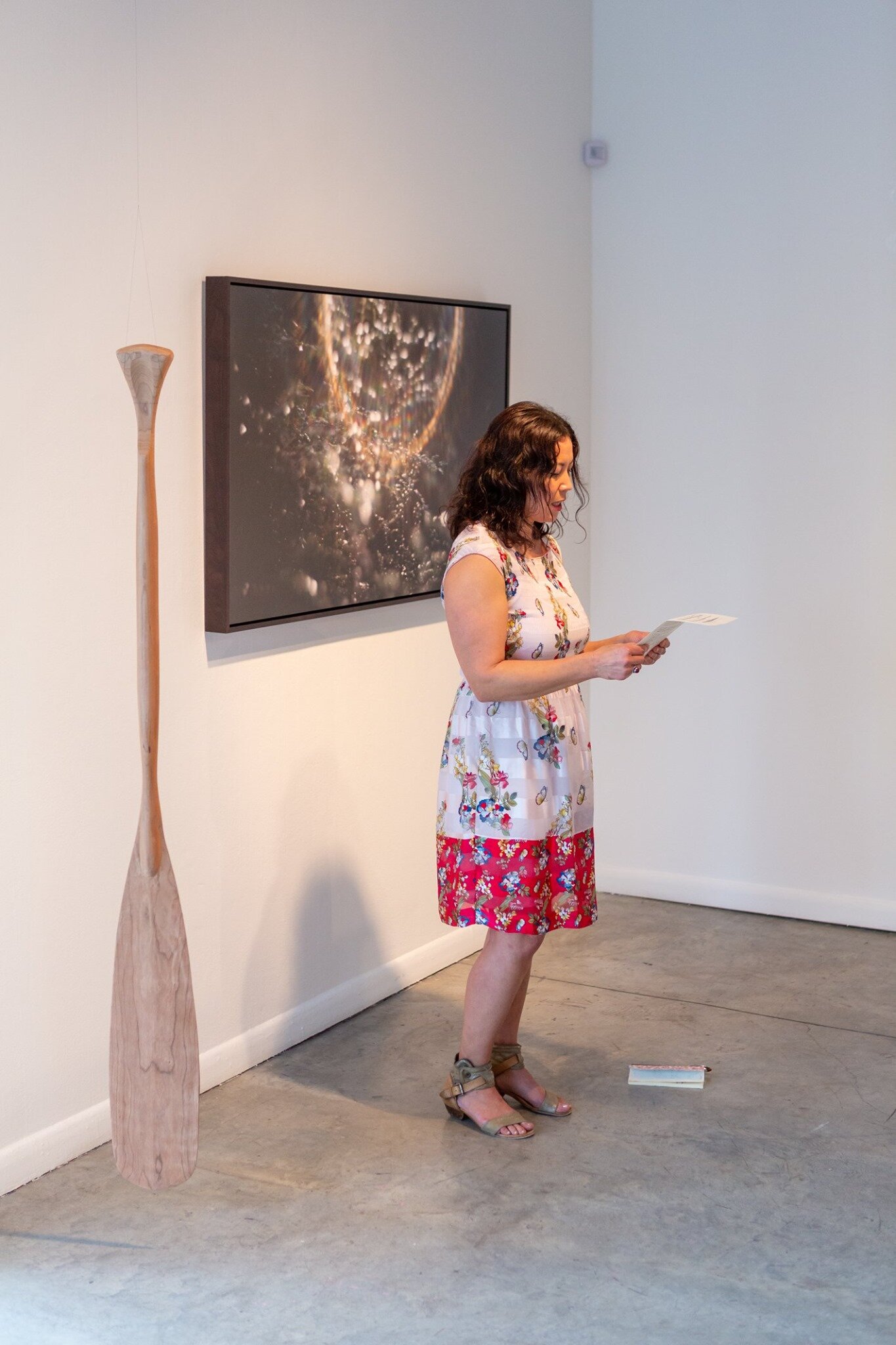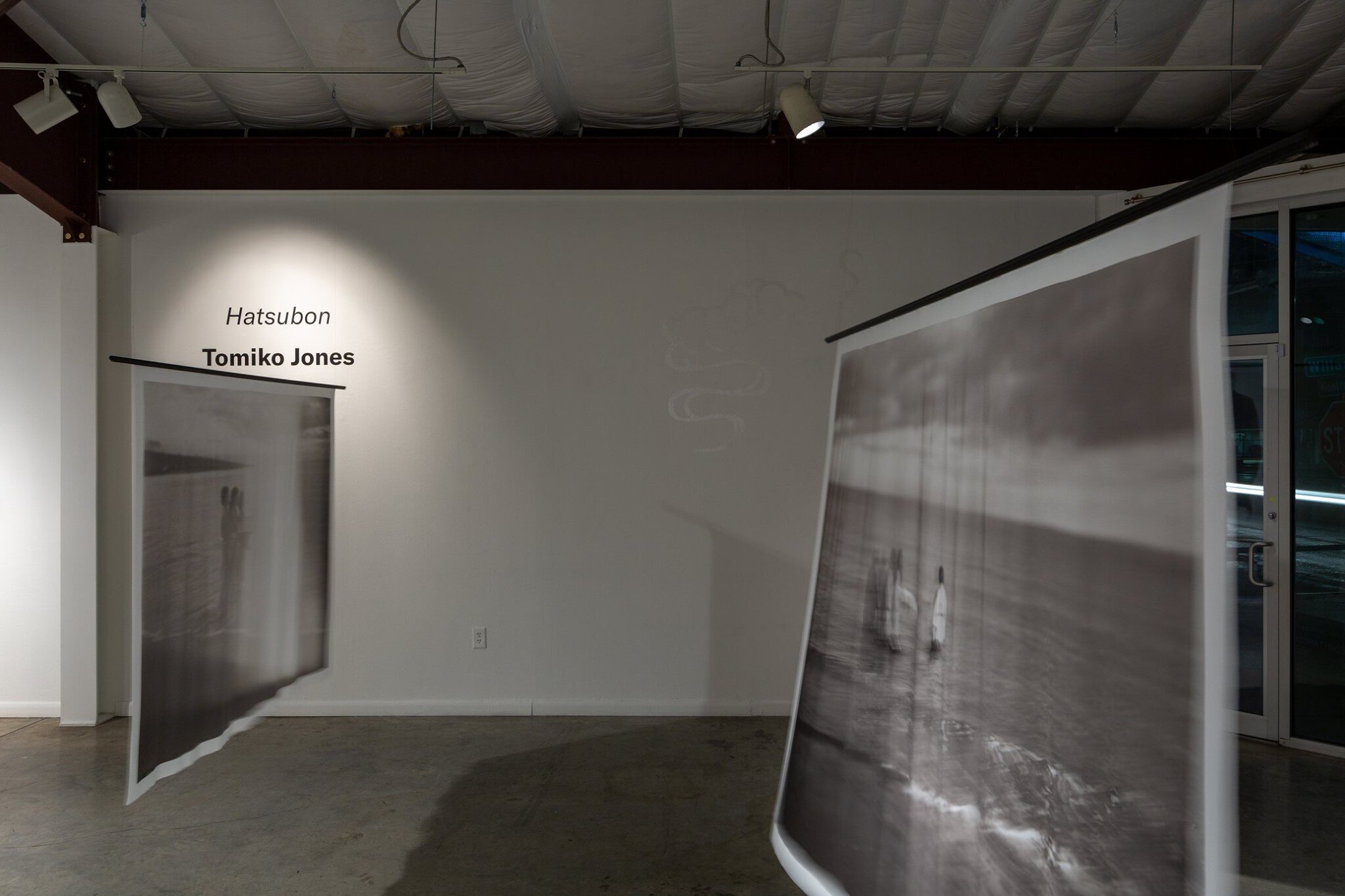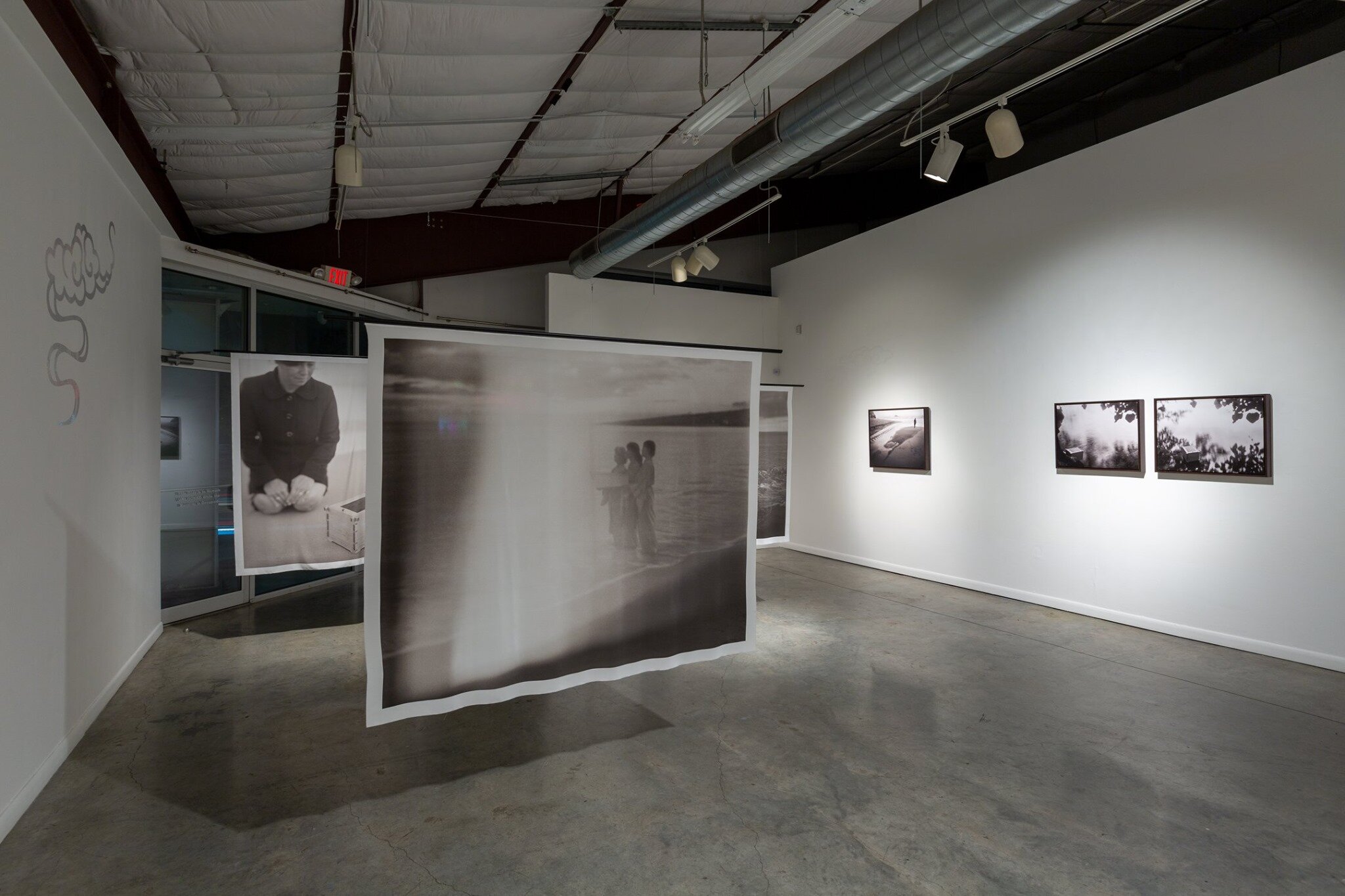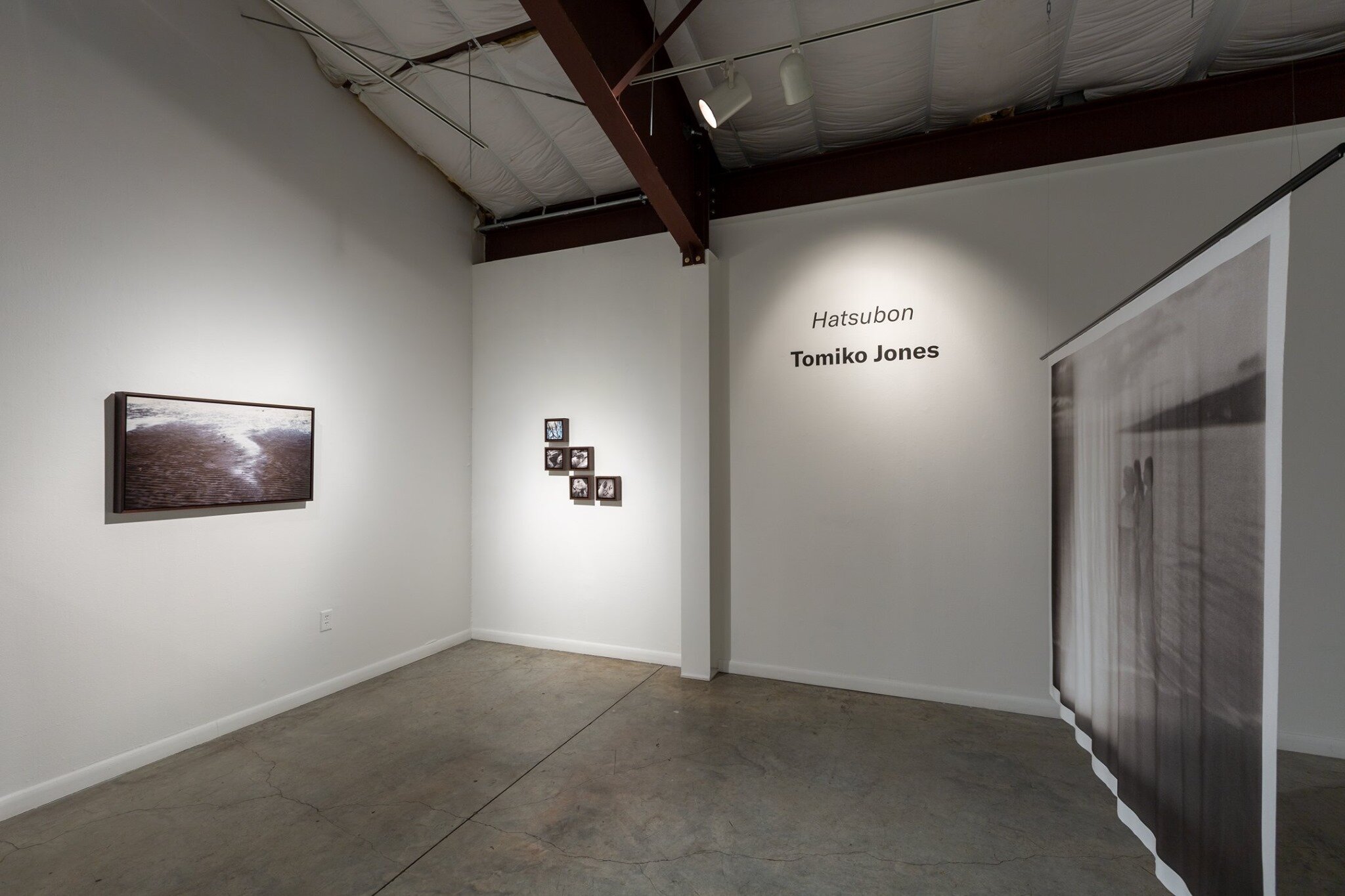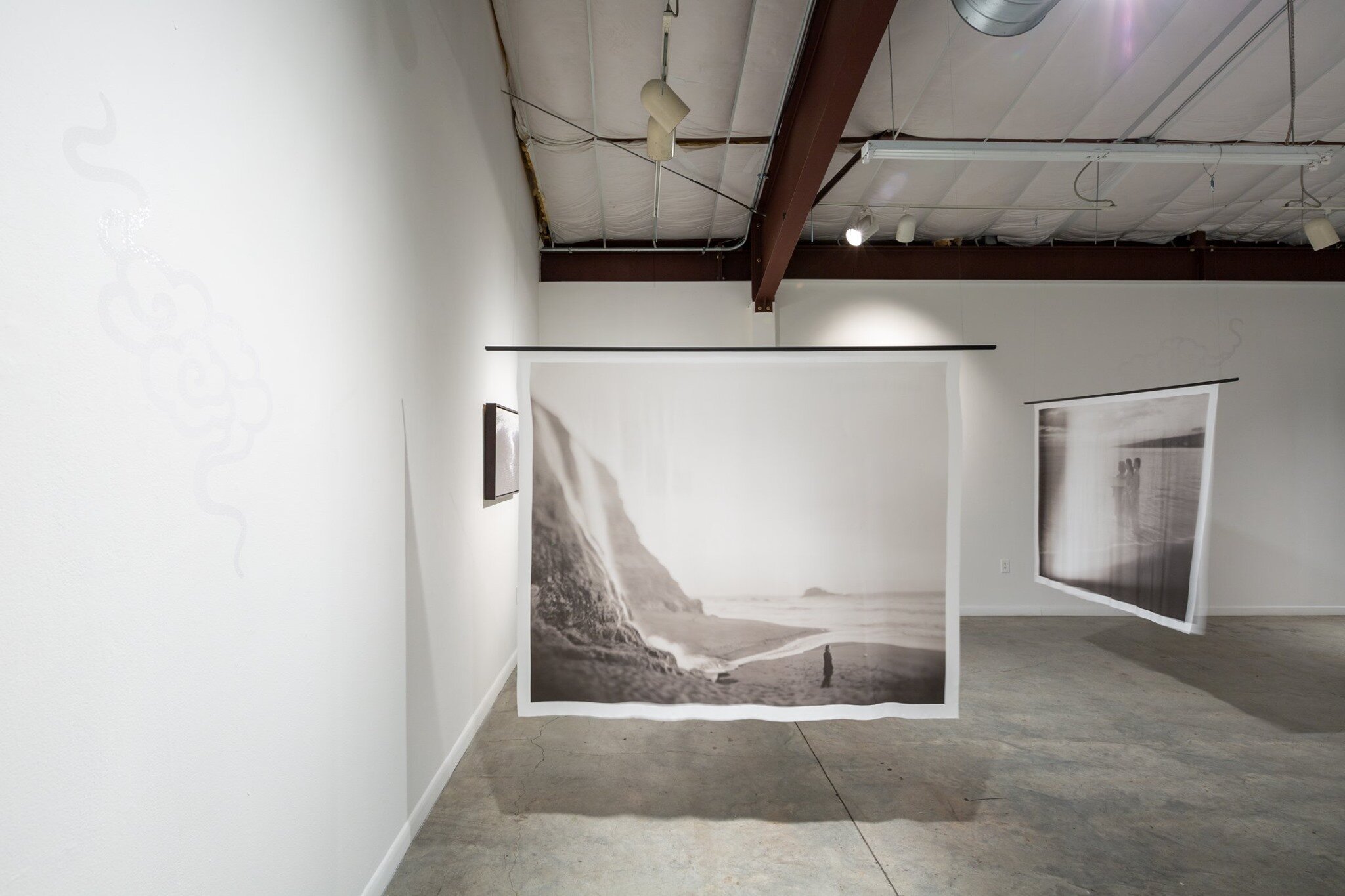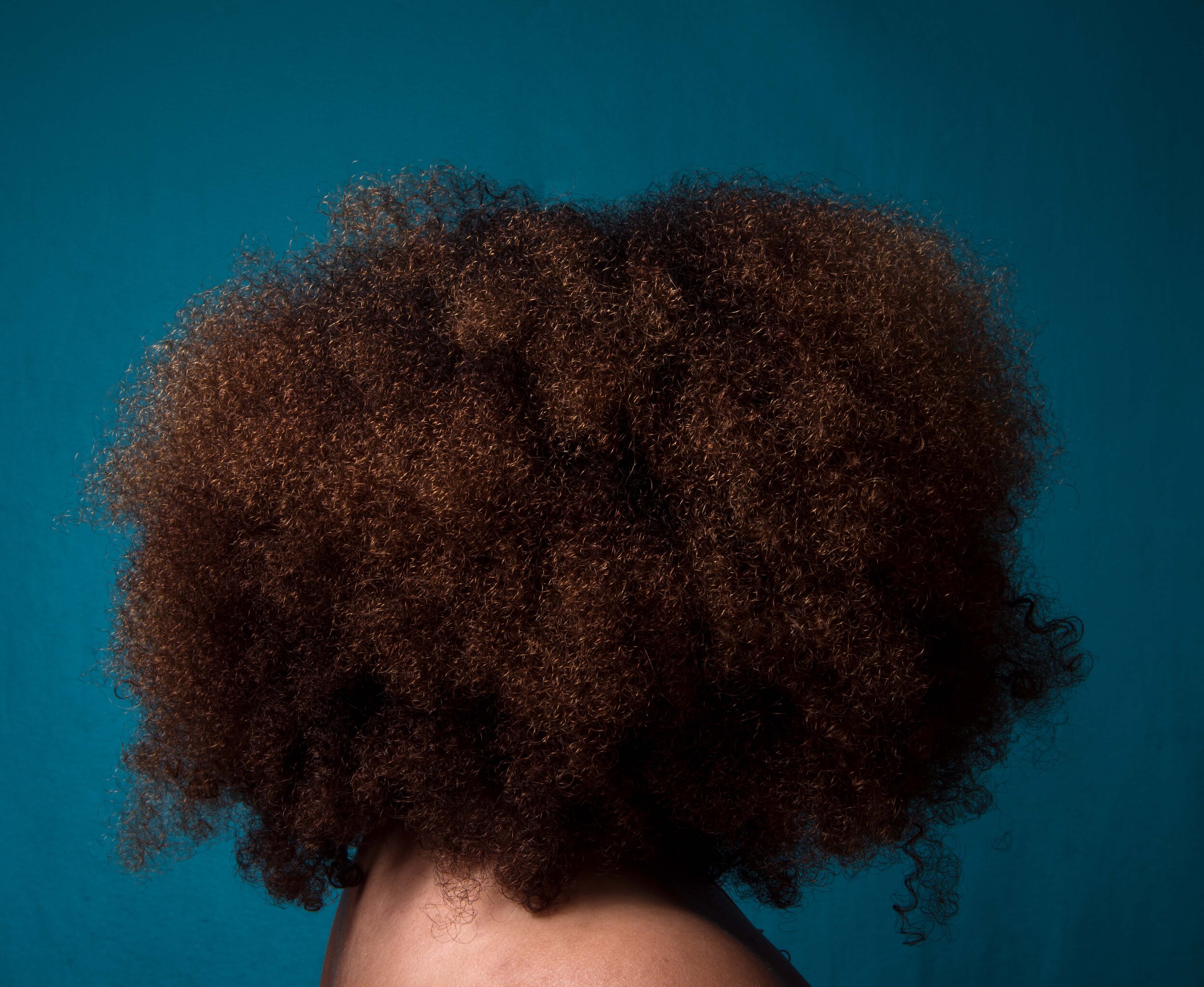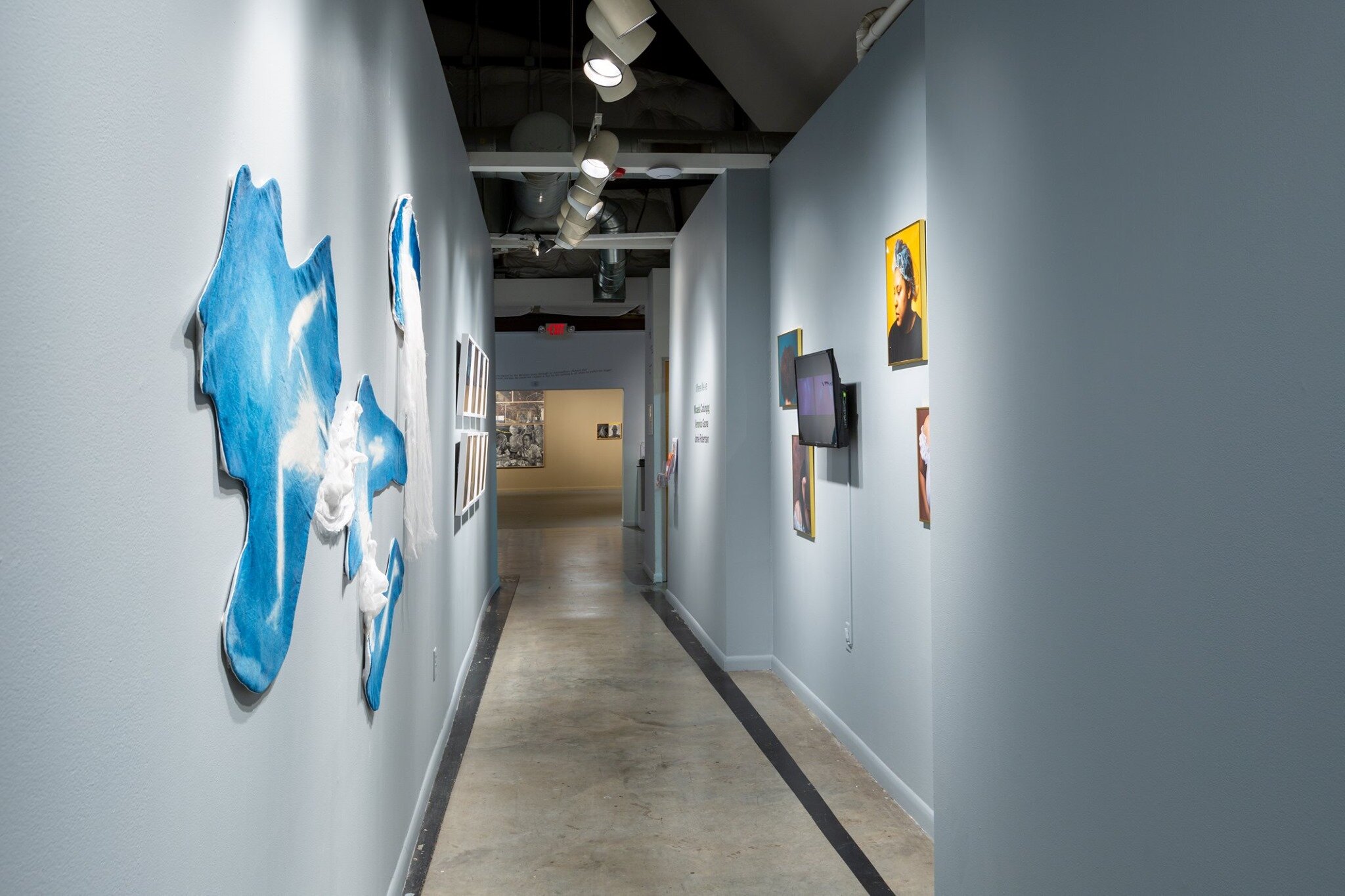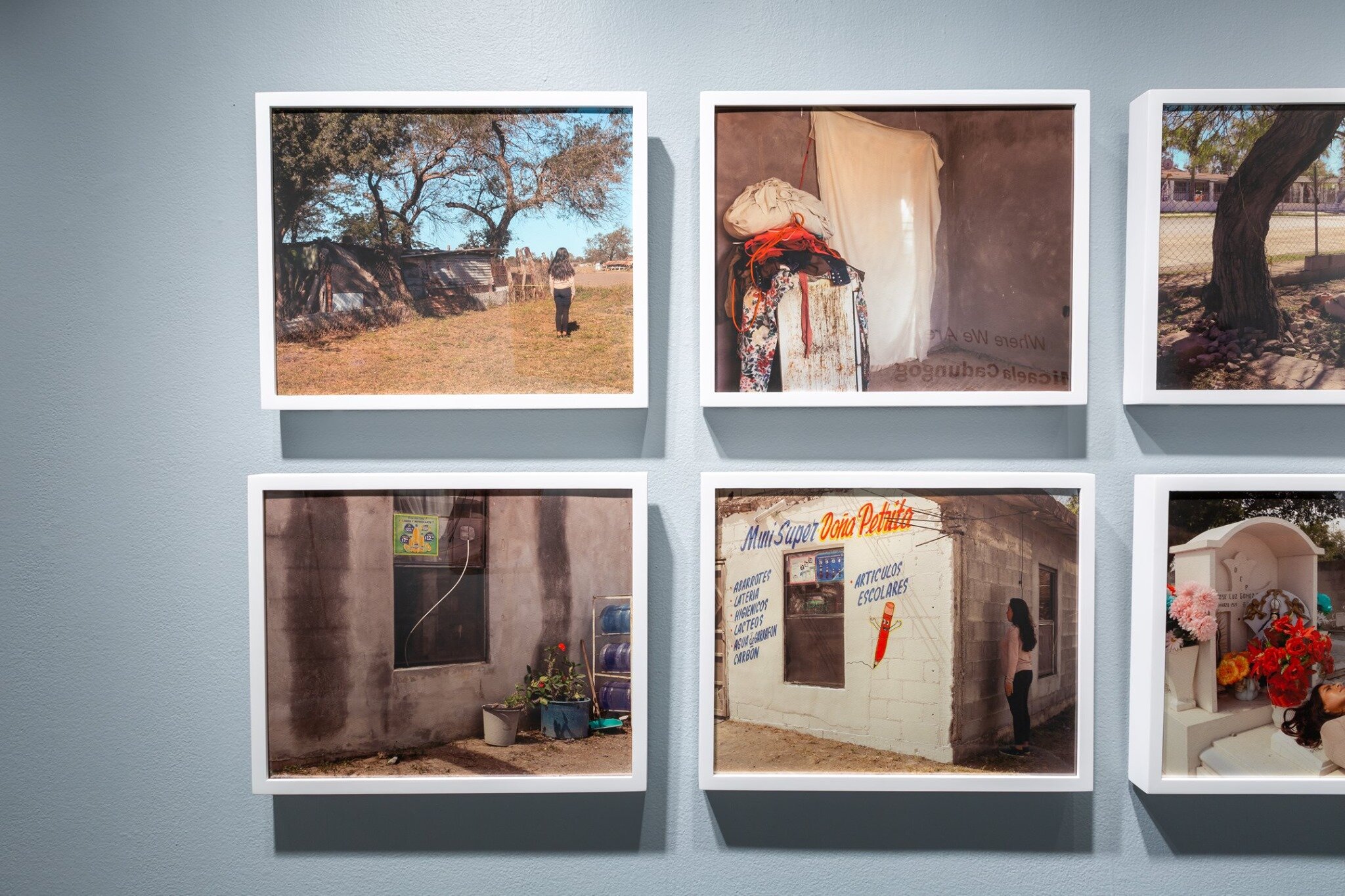PAST EXHIBITIONS
2020











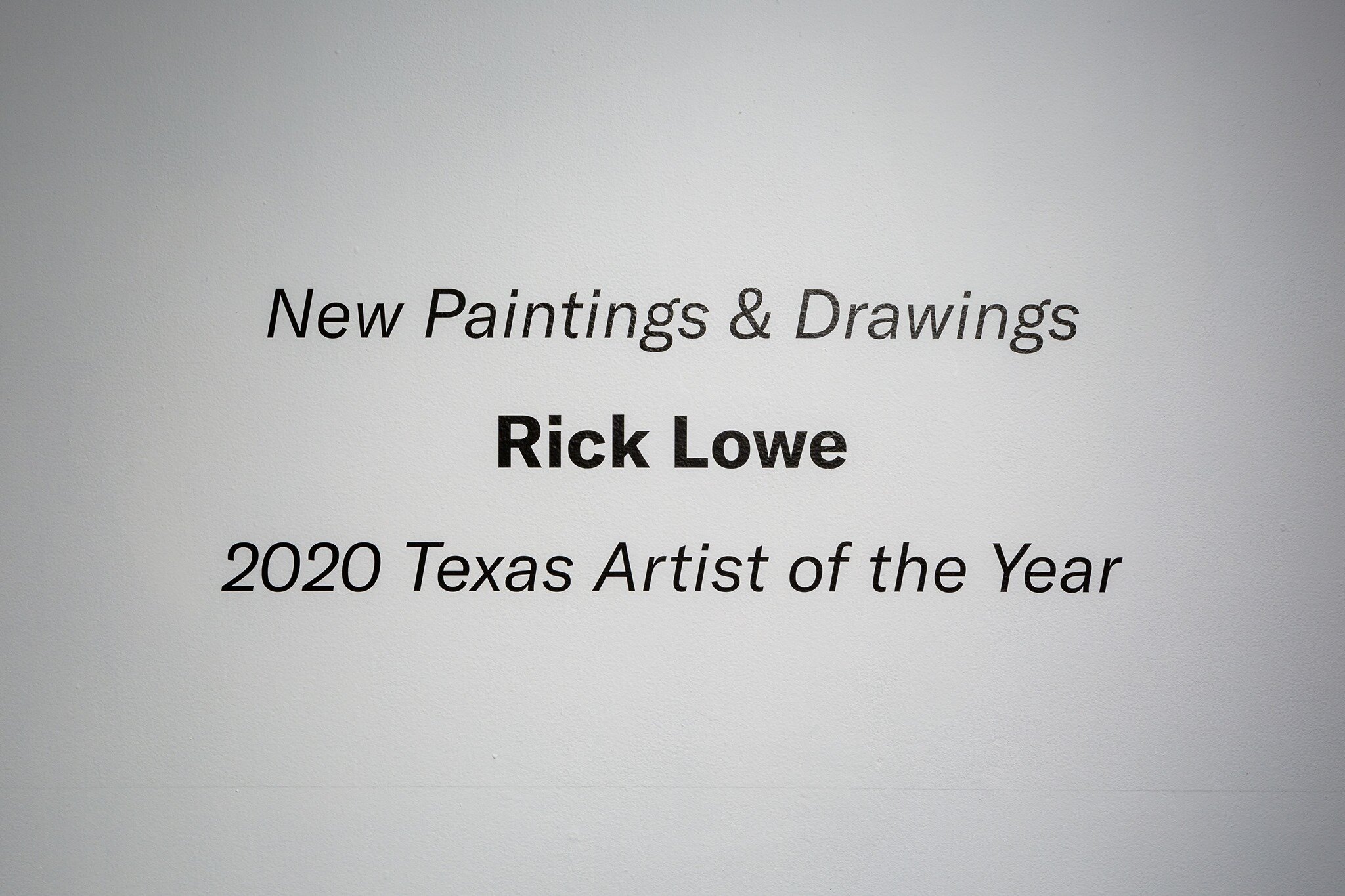
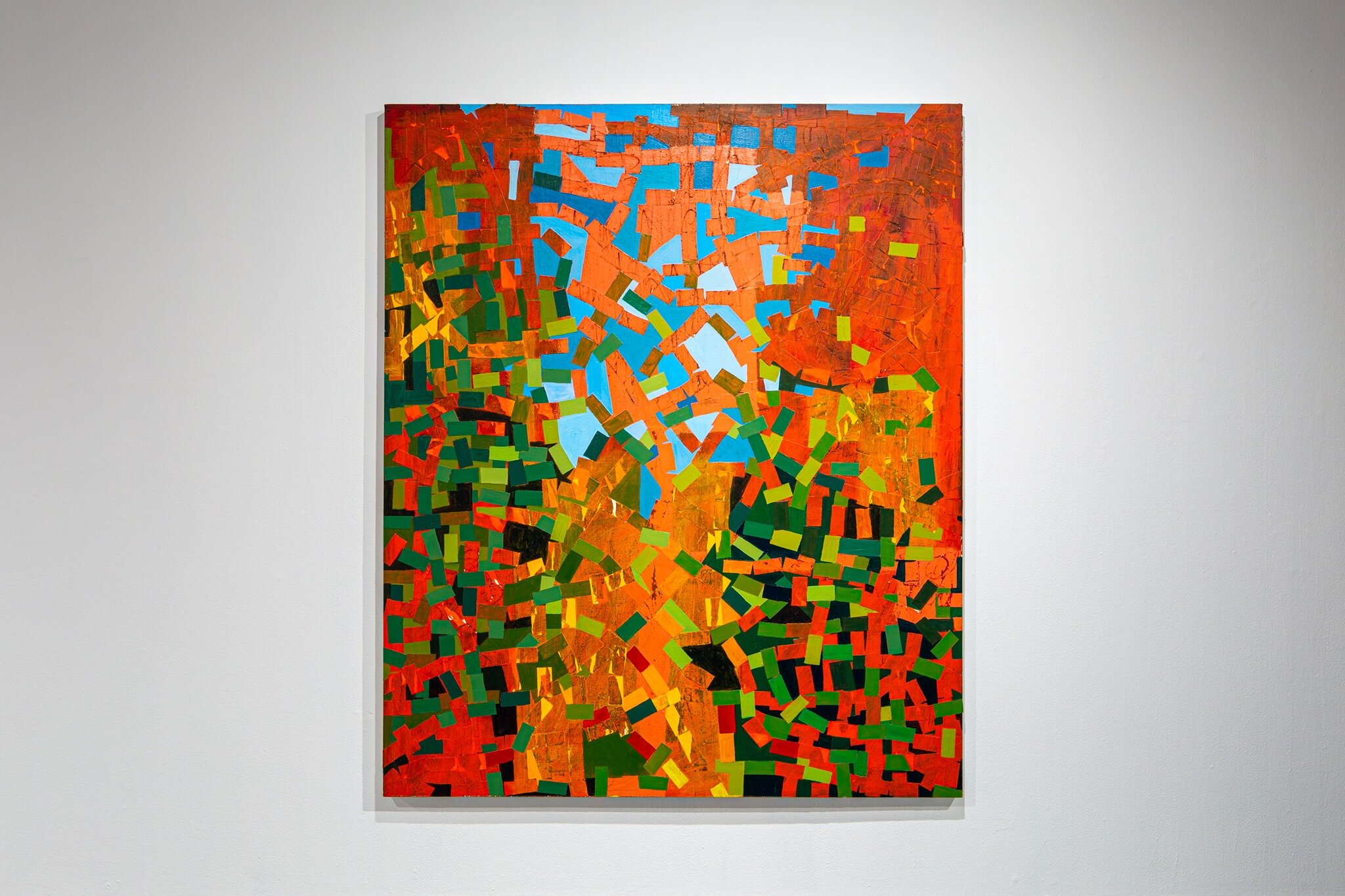








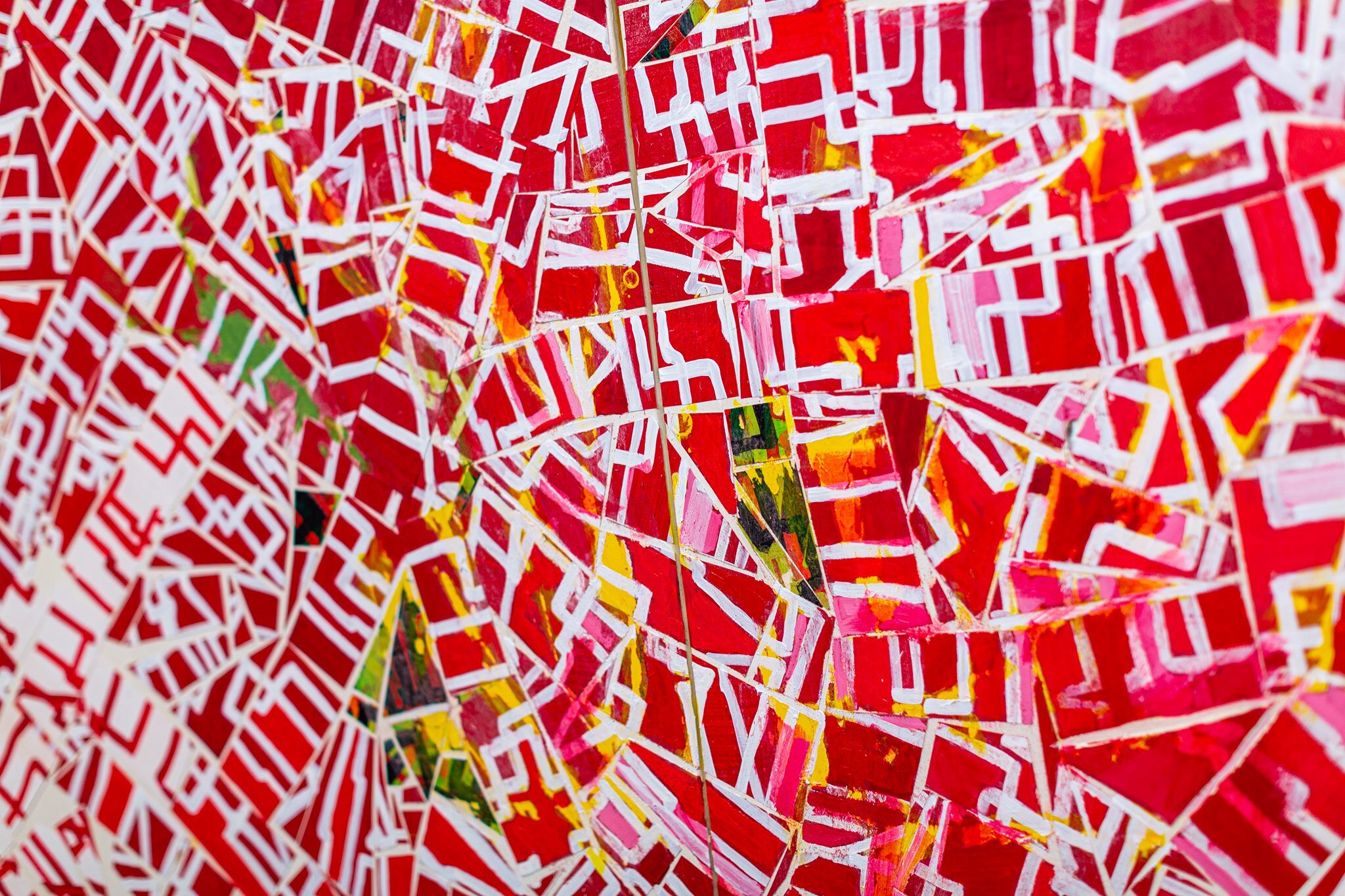




New Paintings & Drawings
RICK LOWE
Art League Houston 2020 Texas Artist of the Year
Exhibition Dates: September 26, 2020 - April 24, 2021 I Main Gallery
Click here to purchase Rick Lowe’s Texas Artist of the Year Catalogue.
PRESS - Houston InTown - Rick Lowe Moves the Needle on Community Support and Art
PAST PROGRAMS:
Blue Tape Art Talk: 10:30 a.m., Thursday, February 11, 2021 I ALH YouTube
In Conversation: Rick Lowe & Alex Jen, 2 p.m., Saturday, November 7, 2020 I ALH YouTube
Art League Houston (ALH) is honored to present New Paintings & Drawings, an exhibition of recent work by Artist Rick Lowe, the ALH 2020 Texas Artist of the Year. New Paintings & Drawings features artwork created over the course of the last few years, visualizing Lowe’s signature, vivid explorations of color and complex visualizations of compositional space. A catalogue focusing on the artist’s career published by Art League Houston is available in conjunction with this exhibition (design and layout by Teresa Bamford Southwell). The catalogue includes full color images and a critical essay by Alex Jen, a writer and curator currently based in Chicago, Illinois.
Born in rural Alabama, Rick Lowe is a distinguished artist whose remarkable achievements in the art world are mirrored by his championship of people and communities through social practice-based art projects, as evidenced, in particular, through Houston’s noteworthy Project Row Houses. Co-founded in 1993 by Lowe, Project Row Houses is an arts and cultural community located in Houston’s significant, historical Third Ward – one of the city’s oldest African American neighborhoods. Much of Lowe’s interest and adept skill with collaboration comes from his family upbringing, where he was surrounded by a large family of four brothers and seven sisters. This sense of familial community is closely mirrored in many of his projects that focus on building and nurturing relationships.
Lowe, who attended Columbus College, Columbus, Georgia (1979-82) and Texas Southern University, Houston, Texas (1990-92) is recognized for his community engagement projects and philosophical approach of “social sculpture” that uses creativity as a catalyst for change and empowerment of people in economic, social and political realms. Lowe is also known for his visual artistic repertoire that includes abstract works on paper and paintings often depicting ariel views of domino games. He became fascinated by the shapes and patterns made by the game, especially seen when played with black dominoes on a white table. The artist eventually started taking photographs of the games, documenting the movements and paths created that resemble, in many ways, the maps made by urban planners of cities and interconnected neighborhood communities. Lowe traces the shapes after his games, eventually layering them one on top of the other – the end result creating a multilayered, abstract composition. A longtime lover of the game, Lowe saw dominoes as an everyday activity and familiar way to connect, interact and engage with the residential community surrounding Project Row Houses.
“The paintings and drawings I make are deeply rooted in the experience of what I call “domino culture.” While dominoes is a board game like many other board games played around the world, I find that dominoes, in particular, generates a kind of culture in communities where it is played,” states Lowe. “It has the contemplative element of chess, the rapid maneuvering of checkers, but unlike most board games, dominoes often times are slammed to the table with great force highlighting the physicality of the game. For me, the culture is informed by the sounds of the dominoes clacking on the table (in places where dominoes has generated a culture, it’s not a silent game), the boisterous bluffing to gain advantage, and most important to me, the beautiful shapes that form as the dominoes are laid out. I feel fortunate to have been a student of many great thinkers who may be locked out of traditional academic institutions. These thinkers have keen eyes, ears, and minds to what is happening in many areas of life that range from the social, political, to the economic.”
Lowe’s artistic repertoire closely parallels his social sculpture and community practice through the physical act of engaging, whether it be through a domino game or community engagement, with those around you. According to Lowe, “The domino drawings offered such an opportunity both in terms of the opportunity to sit and work in a contemplative environment of the studio, and in terms of thinking about the issues of equity and urban planning in a more conceptual way. Within the social and economic context, planners, architects, social scientists, and others all work with mapping as a way to guiding knowledge production. The map-like appearance of the domino drawings offered a way for me to think about the work I was doing in the abstract.”
Lowe’s work in Houston has expanded over the years in a more global sense, where he has played monumental roles as a guest artist in community projects throughout the United States and abroad, including the following: developed the Watts House Project in Los Angeles, California (1996); collaboration with arts consultant Jessica Cusick on the Arts Plan for Rem Koolhaus designed Seattle Public Library (2001-2002); collaboration with British architect, David Adjaye, on a project for the Seattle Art Museum’s new Olympic Sculpture Park (2005); organized Transforma Projects in New Orleans – a collaborative effort to creatively engage artists within the city post Katrina (2006); developed “Small Business/Big Change” for the Anyang Public Art Program, Anyang, South Korea (2010); and Trans.lation: Vickory Meadow for the Nasher Sculpture Center, Dallas, Texas (2013). Most recent projects include his Victoria Square Project in Athens, Greece, a collaboration with Maria Papadimitriou. Ongoing since 2016, the Victoria Square Project is a social sculpture that strives to empower the local community through creative experiences. Through building artistic spaces of belonging and refuge for locals and immigrants alike, this project gives new life and a sense of familial space to a somewhat polarized and forgotten community, stricken by grief and displacement in the recent refugee crisis.
Lowe, who is currently a Professor of Interdisciplinary Practice at the University of Houston, has received numerous accolades and awards throughout his career, but was recently honored with an appointment by former President Barack Obama to the National Council on the Arts (2013), followed by his acknowledgement as a MacArthur Fellow (2014). Earlier in his career, Lowe and Project Row Houses received a silver medal by the Rudy Bruner Awards in Urban Excellence (1997). In 1998, he joined the Skowhegan School of Art faculty in Skowhegan, Maine, later serving as the Governor of their School of Painting and Sculpture and as the recipient of the 2005 Skowhegan School of Painting and Sculpture Governors Award. Lowe was the year 2000 recipient of the American Institute of Architecture Keystone Award. Additionally, he served as a Loeb Fellow at Harvard University (September 2001 – June 2002); an Osher Fellow at the Exploratorium in San Francisco, California (2005-2006); an Innovator Fellow with the Japan Society (2007); he received the Creative Time Annenberg Prize for Art and Social Change (2010); and was recognized as a Mel King Fellow at MIT (2014). In 2015, Lowe was acknowledged as an Auburn University Breeden Scholar, and received the University of Houston’s President’s Medallion Award, along with honorary doctorate degrees from the Maryland Institute College of Art and Otis College of Art. In 2016, Lowe joined the University of Houston as Professor of Art, and served as the Stanford University Haas Center Distinguished Visitor. He has also served as a board member for the prestigious Andy Warhol Foundation for the Visual Arts. In addition to his work with Project Row Houses and the University of Houston, Lowe has served on numerous Houston community boards and organizations including: SHAPE Community Center; the Municipal Arts Commission; board member of the Greater Houston Convention and Visitors Bureau; and board member for the internationally recognized Menil Foundation.
Lowe is represented by Hiram Butler Gallery in Houston, Texas, and Louise Alexander Gallery in Los Angeles, California. He has exhibited in numerous institutions worldwide, including exhibitions at the following: the Phoenix Art Museum, Phoenix, Arizona; Contemporary Arts Museum, Houston, Texas; Museum of Contemporary Arts, Los Angeles, California; Neuberger Museum, Purchase, New York; Gwangju Biennale, Gwangju, South Korea; Museum of Fine Arts, Houston, Houston, Texas; Glassell School of Art, Houston, Texas; the Kumamoto State Museum, Kumamoto, Japan; and the Zora Neale Hurston Museum, Eatonville, Florida, among others.
Major funding for the 2020 Texas Artist of the Year exhibition and catalogue was generously provided by Hiram Butler & Andrew Spindler-Roesle, Josh Pazda & Chris Goins, the Eleanor & Frank Freed Foundation, Jacques Louis Vidal Charitable Fund, and the National Endowment for the Humanities (NEH) as part of the 2020 Coronavirus Aid, Relief and Economic Security (CARES) Act of 2020. Any views, findings, conclusions, or recommendations expressed do not necessarily represent those of the National Endowment for the Humanities.
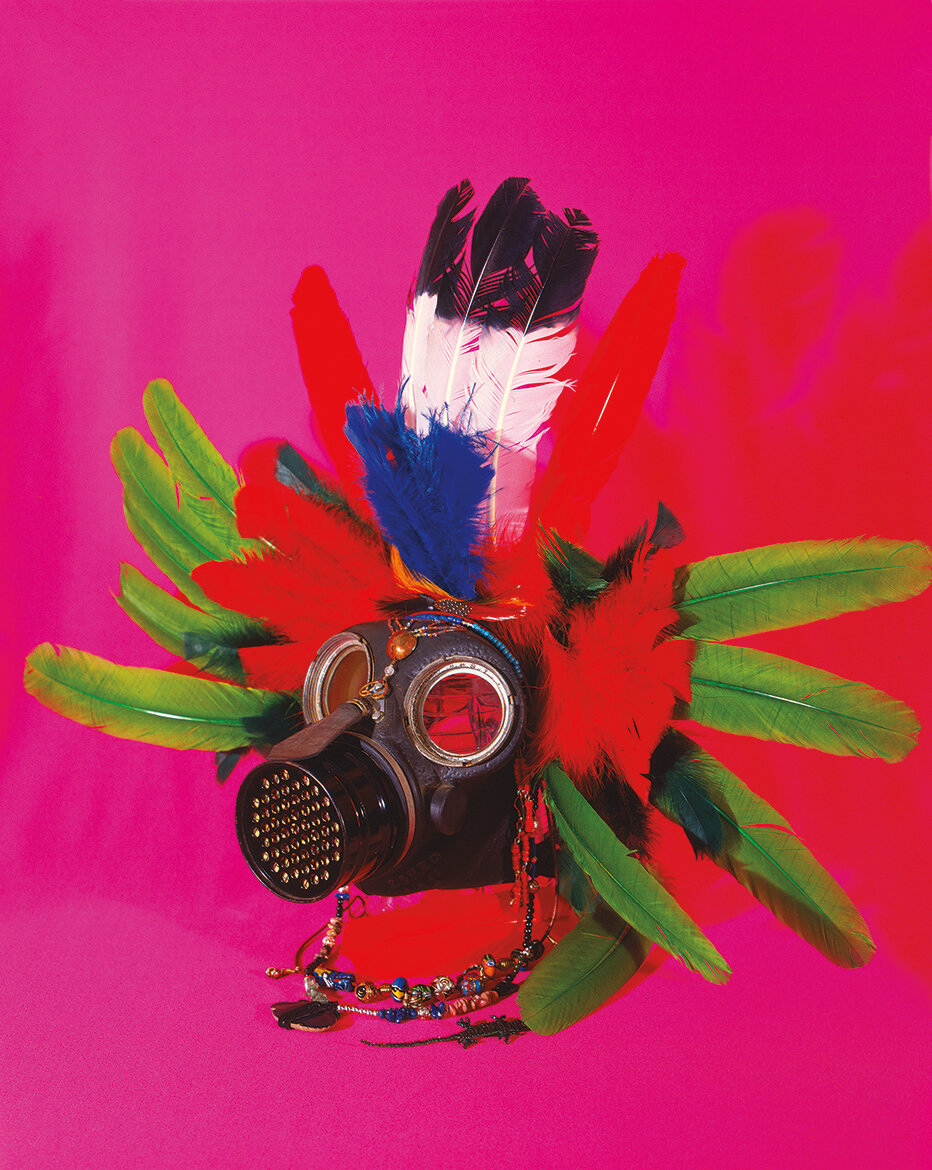



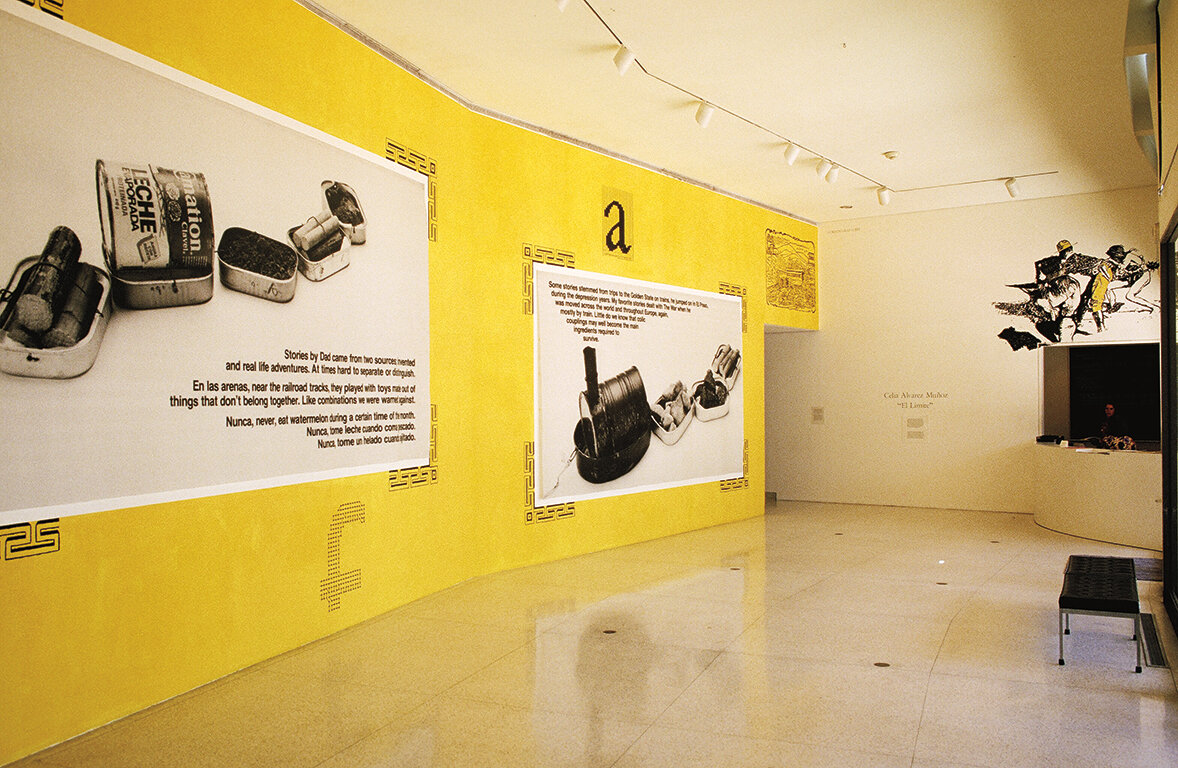










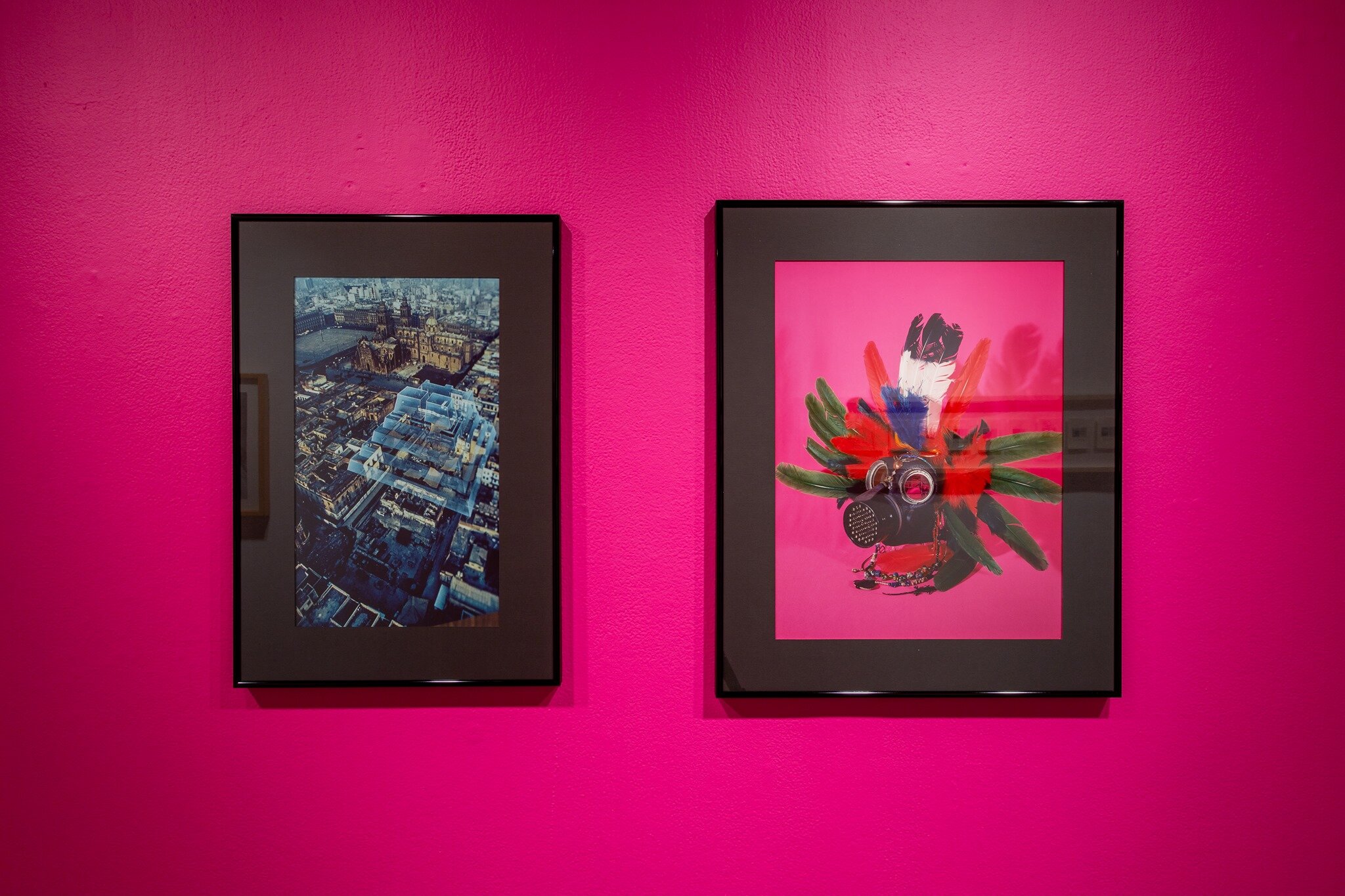










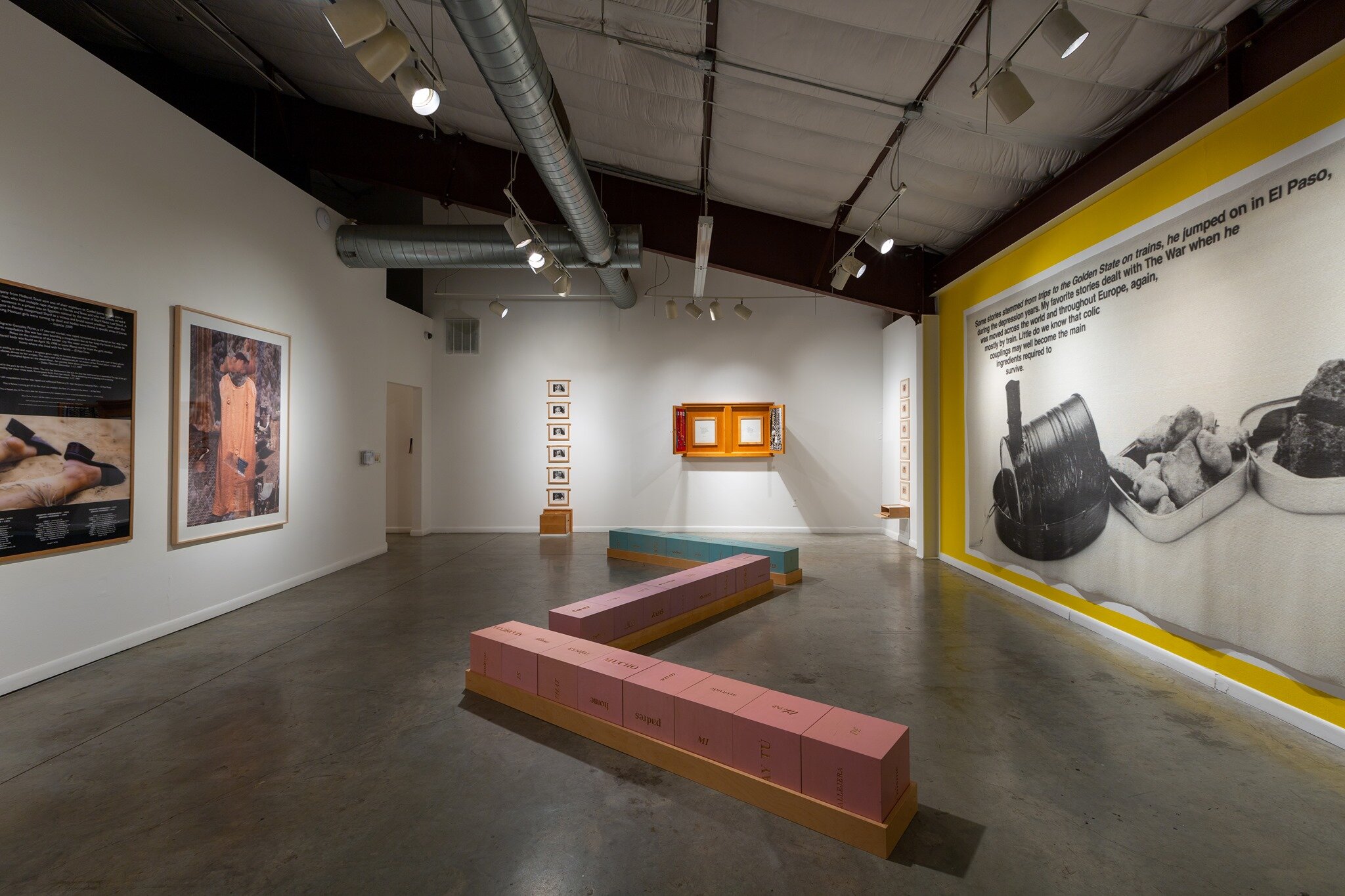

Obras
CELIA ÁLVAREZ MUÑOZ
Art League Houston 2020 Lifetime Achievement Award in the Visual Arts
Exhibition Dates: September 26, 2020 - April 24, 2021 I Front & Hallway Galleries
Click here to purchase Celia Álvarez Muñoz’s Lifetime Achievement Award in the Visual Arts catalogue.
PAST PROGRAMS:
In Conversation: Celia Álvarez Muñoz & Benito Huerta, 2 p.m., Saturday, March 27, 2021 I ALH YouTube
Blue Tape Art Talk: 10:30 a.m., Thursday, February 11, 2021 I ALH YouTube
Art League Houston (ALH) is honored to present Obras, an exhibition of work by Artist Celia Álvarez Muñoz, the ALH 2020 Lifetime Achievement Award in the Visual Arts recipient. Obras explores the dynamic range of work created by Álvarez Muñoz throughout her career, emphasizing her innovative transitions between photographic media, installations-based work, sculpture, and book art. A catalogue focusing on the artist’s career published by Art League Houston is featured in conjunction with this exhibition (design and layout by Lindsay Starr Design). The catalogue includes full color images and a critical essay by Roberto Tejada, Hugh Roy and Lillie Cranz Cullen Distinguished Professor, University of Houston, Houston, Texas.
Born in El Paso, Texas in 1937, Álvarez Muñoz is a conceptual multimedia artist currently living and working in Arlington, Texas. She is recognized internationally for her diverse and multifaceted body of work including artist books, photography, painting, written text, installation and public art. Álvarez Muñoz states that the mission driving her artistic practice has always been one of an “Artivist”: an artist and activist. This ideology and philosophy underscores much of her career and work. As a child, her father was deployed to Alaska and Germany, leaving Álvarez Muñoz in the care of her mother, aunt and maternal grandmother in El Paso. Her childhood experiences and youth living in the borderlands inspired much of her later creative practice, referencing dichotomous cultures, values and language complexities found along the U.S.-Mexico border, along with the physical, psychological and socio-political issues of life along the border zone. In college she studied art of all levels, receiving her BA in Art from Texas Western University (now University of Texas, El Paso), and started a career in teaching art to children upon graduation. She also worked in advertising as a fashion illustrator prior to graduating from college. Álvarez Muñoz, her husband, and their two small children relocated throughout the U.S. several times before finally moving to Arlington.
Álvarez Muñoz enrolled in graduate school at North Texas State University (now University of North Texas, Denton) in 1977, where she studied with known Texas artists Vernon Fisher and Al Souza. During her studies, she began work on her well-known Enlightenment series, a multimedia, conceptual visual book and language project including a total of ten works she created over a span of about five years. Enlightenment visually portrays the confusing and often erroneous misunderstandings caused by language barriers, cognitive development, and language acquisition. Throughout the series, the artist plays with text, puns, and double meanings she experienced growing up along the Mexican border. The dominant themes of her bilingual and bicultural heritage, as well as an emphasis on education and educational principles (referencing her work as a teacher throughout much of her career), are seen throughout the Enlightenment project, as well as her oeuvre, with later photographs and works addressing these still current and poignant experiences. Álvarez Muñoz states her ongoing interest in and examination of the photo and image making process as a significant drive for her work – utilizing different camera formats, including 35 mm, 4x5, 8x10, and digital media. She is interested in the exploration of tools and how the camera “sees” versus how the eye “sees” (or assumes to see), which often challenges preconceived assumptions.
Álvarez Muñoz recalls numerous moments of both a personal and historical importance as key landmarks in her practice and development as an artist: “Since my days of teaching art at all levels, preschool to university, as well as the creation and work as an artist on commissioned residencies and public art, the goal has always been to develop validation or protest to our cultural evolution as a citizen of a community, city, state, country, or the world. In doing so, it has given more meaning to the process of artmaking. My teaching perspective gave rise to developing projects for commissions. The following are key historical and personal moments that have impacted and continue to influence my career:
A dramatic demographic shift in El Paso with the settlement of The Chamizal Treaty.
Installations/collaborations with retirement communities remembering Snugg Harbor in New York’s Staten Island, and Cerveceria Carta Blanca in Monterrey, Mexico.
An airport in Phoenix, Arizona’s connection to WW II.
Protest to unfair women’s labor practice in the manufacturing industry in the USA and Manchester, England.
Roswell, New Mexico’s attitude towards its “aliens.”
A coming-out GBL Texas community’s move to San Francisco, California.
San Antonio’s convention center expansion hinge honoring regional music.
San Antonio River links a park to the history and function of its river.
San Antonio’s main plaza reveals a multitude of its stories.
A protest installation with SMU/West Dallas due to the Calatrava Bridge and the gentrification in the once segregated Hispanic demographic.
A protest to the feminicides in Mexico’s Cuidad Juárez NAFTA maquiladoras.
An Austin, Texas library’s acknowledgement to its power and water treatment plants.
Participation in “Radical Women: Latin American Art, 1960-1985” at The Hammer Museum, Los Angeles, California (2017), followed by travel to The Brooklyn Museum, Brooklyn, New York, and Pinacoteca de São Paulo, São Paulo, Brazil (2018).
My mission in art making has always been one of an Artivist – I am an artist and an activist.”
These experiences and accomplishments as an Artivist have left an indelible impact on Álvarez Muñoz’s laudable and prolific career, which is recognized by numerous awards and achievements. In 1995, she received the Honors Award for Outstanding Achievement in the Visual Arts from the Women’s Caucus for Art. Prior to this award, Álvarez Muñoz received two National Endowment for the Arts grants for both Photography and New Genres (1988 and 1991); she is also the recipient of the CAA Committee on Women in the Arts Recognition Award, and the Outstanding Centennial Alumnus award by the University of North Texas College of Arts and Sciences. In 2009, Roberto Tejada (the Hugh Roy and Lillie Cranz Cullen Distinguished Professor at the University of Houston) published a book on Álvarez Muñoz and her work (Celia Álvarez Muñoz, Los Angeles: UCLA Chicano Studies Research Center Press; Minneapolis: University of Minnesota Press, 2009).
Álvarez Muñoz’s work has been featured in numerous national and international solo and group exhibitions of note, including: University of Texas at El Paso, El Paso, Texas (1983, solo); Whitney Biennial, New York, New York (1991); Museum of Contemporary Art San Diego, San Diego, California (1991, solo); Dallas Museum of Fine Art, Dallas, Texas (1991); Capp Street Project, San Francisco, California (1994); University of Texas at Arlington (2002); Station Museum of Contemporary Art, Houston, Texas (2012); and the exhibition and accompanying catalogue, Radical Women: Latin American Art, 1960-85, Hammer Museum, Los Angeles, California (2017; traveled to the Brooklyn Museum, Brooklyn, New York, followed by the Pinacoteca de São Paulo, São Paulo, Brazil, 2018), among others. She is represented in numerous public and private collections throughout the states, including the Art Institute of Chicago, Chicago, Illinois; Getty Research Institute, Los Angeles, California; Museum of Contemporary Art, Chicago, Illinois; and the Museum of Fine Arts, Houston, Houston, Texas.
Major funding for the 2020 Lifetime Achievement Award in the Visual Arts exhibition and catalogue was generously provided by the Eleanor & Frank Freed Foundation, the South Texas Charitable Foundation, Jacques Louis Vidal Charitable Fund, Sharon & Gus Kopriva, Gilberto Cardenas & Dolores García, and Delilah Montoya.
The Writing on the Wall
Alice Leora Briggs
Julián Cardona
Exhibition Dates: March 13 – June 27, 2020 I Main Gallery
You can view the artist talks, here.
Join Sarah & Erin for our virtual BLUE TAPE art talks on Tuesday, April 14, 2020. Click here for more details!
Art League Houston (ALH) is proud to present The Writing on the Wall, an installation of work by Artist Alice Leora Briggs (based in Tucson, Arizona) and text written by Julián Cardona and Briggs (Cardona is based in Ciudad Juárez, Mexico). Selected by ALH’s Artist Advisory Board during the Open Call process, The Writing on the Wall exhibits recent bodies of work addressing immigration and border politics in the city of Juárez, and features visual artwork created by Briggs in conjunction with her projects with Juárez reporter and photojournalist Julián Cardona.
In the preface to their upcoming book, Briggs states, “The people of Ciudad Juárez, who tell their stories in these pages, are neither composite nor fictional characters. A few gave permission to publish their first and last names. Others are identified by nicknames known only among their friends and families. A small number did not want not to be named at all. They share memories of their experiences between 2006 through 2012, years when the streets of their city exploded with violence, years when President Felipe Calderón sent ten thousand federal forces into Ciudad Juárez. A new lexicon that rose out of Ciudad Juárez during this six-year period is the core of our project, an investigation of the language and framework of a main growth industry in this border city: crime. These pages reveal that much of this crime is sponsored by the Mexican State. When not committed by the State, the government’s policy of near impunity condones these crimes.
As with any attempt to capture slang, our efforts have become history before these pages could be bound. Some years after the drug trade’s parallel economy rode into town, it was followed by thousands of soldiers and Federal Police. President Felipe Calderón implied that the resulting deaths of Juárez citizens were equivalent to an extermination of cockroaches. If ever there was an occasion for speechlessness, this was it. But in this city where Spanish and English collide, the streets exploded with words invented and adjusted to describe a world Juarenses had never seen.”
Narratives based on Julián Cardona’s interviews introduce us to individuals who speak this new dialect and provide firsthand accounts of the staggering collateral damage of ‘business as usual’ in Juárez. Briggs’ drawings reveal this environment as unique, but parallel to the many instances of greed, torture, murder and other abuses that decorate the dark corners of human history.
Between 2008-2010, Briggs created her first renderings of ABCedario de Juárez, a mutable theatre of tortures and executions, a pictorial Spanish alphabet in 32 panels. This homage to both Juárez and Hans Holbein’s Alphabet of Death sharpened her interest in the new vocabulary rising out of Juárez. She started to gather and study narcotraficante, gang and street slang, as well as to create a visual record of the city. Her work is grounded in time spent in Juárez beginning in 2008.
Julián Cardona, a resident of Ciudad Juárez since early childhood, conducted his initial interview in 2008 with crime victim, Pastor Socorro Garcia. She was present when masked gunmen entered a drug treatment clinic, opened fire on a religious service, and killed eight men. Cardona continued to conduct interviews that present the experiences of victims and perpetrators of Juárez crime. Cardona has collected slang terms from the citizens of Juárez, including drug dealers and traffickers, professional killers, kidnappers, crime victims, government officials, reporters, human rights workers and ex-police agents. Examples include: an elementary school boy from a poor barrio who understands the liabilities and assets of his dream career as a professional killer; a preteen who divides and packages drugs for retail sales; a woman who wakes to the news of the day: her sons’ childhood friend dinner guest from the night before is a decapitated corpse displayed on an overpass in the center of Juárez.
Briggs and Cardona worked independently of each other, but in late 2012, writer Charles Bowden pointed out that they had been conducting research on different facets of the same project. An unusually open collaboration grew out of a Las Cruces meeting with Bowden. Cardona shared a number of photographs that Briggs used as reference material for drawings. Briggs and Cardona wrote and rewrote Cardona’s interview based narratives over a period of ten years, and the body of work on view is a result of their collaborations.
ABOUT THE ARTIST
Alice Leora Briggs is an artist and writer based in Tucson, Arizona. She received her MA and MFA from the University of Iowa. Briggs is the recipient of numerous fellowships, including: Utah Arts Council; Arizona Commission on the Arts; Tulsa Artist Fellowship; and served as a Fulbright Scholar at the Academy of Fine Arts and Design, Bratislava, Slovakia. Since 2008, her work, both written and visual is devoted to the people of Ciudad Juárez. She is currently collaborating with Juárez reporter and photojournalist Julián Cardona to write and illuminate an unhinged graphic glossary of the language of violence in Ciudad Juárez. Her work is included in numerous public collections, including: Denver Art Museum, Denver, Colorado; Arkansas Art Center, Little Rock, Arkansas; Crystal Bridges Museum of American Art, Bentonville, Arkansas; Phoenix Art Museum, Phoenix, Arizona; Scottsdale Museum of Contemporary Art, Scottsdale, Arizona; El Paso Museum of Art, El Paso, Texas; Fine Arts Museums of San Francisco, San Francisco, California; Library of Congress, Washington, D.C.; University of Chicago, Chicago, Illinois (Special Collections, Rare Books); Museum of Texas Tech University, Lubbock, Texas; Tucson Museum of Art, Tucson, Arizona; Yale University, New Haven, Connecticut (Beinecke Rare Book and Manuscript Library); and the University of Oxford, Bodleian Library, United Kingdom.
Hatsubon
Tomiko Jones
Exhibition Dates: March 13 – June 27, 2020 I Front Gallery
You can view the artist talks, here.
Join Sarah & Erin for our virtual BLUE TAPE art talks on Tuesday, April 14, 2020. Click here for more details!
PRESS CultureMap Houston - 12 vivid and eye-catching March events no Houstonian should miss
Art League Houston (ALH), a FotoFest 2020 Biennial Participating Space, is proud to present Hatsubon, an installation of work by Artist Tomiko Jones, based in Madison, Wisconsin. Selected by ALH’s Artist Advisory Board during the Open Call process, Hatsubon is a memorial exhibition exploring the dynamic tension between tradition and performance through photographs and objects. This body of work lives in the diaphanous space between life and death, and is a memorial for the artist’s father. The materiality of the works suggests the dualities of the fleeting and the lasting, the ephemeral and the corporeal, and the pendulous state between longing and release.
The ceremony of hatsubon marks the first anniversary of a loved one’s death, held during the yearly ritual of O-bon, a Japanese Buddhist custom honoring ancestors. A ritual for the deceased is the sending of a small vessel–shoryobune–to sea. Jones states, “My mother, sister and I all remembered the boat we used to send out when my sister and I were children. I made my own version by splitting, steaming, and bending bamboo into a boat form and skinning it with waxed kozo paper. Robed in simple cotton kimonos we sewed, the three of us sent the shoryobune at dawn from the shores of Hawai’i. The urn, a handcrafted wooden box, is seen in two images: on the shores of the Monongahela River, Pennsylvania and on the Pacific shore, Hawai’i. Hatsubon visits three geographic sites of significance: Pennsylvania, my father’s birthplace, Hawai’i, my mother’s birthplace and where he is buried, and California, where my parents met and my birthplace. Just a few days before my father passed away, an unforgettable conversation with him guided me to carve an oar from cherry wood.”
The exhibition includes performative photographs printed on silk and paper made with a 4x5 film field camera, as well as portraits of the artist’s father made with a medium format Rolleiflex film camera. Hatsubon evidences how cultural customs, design, and materials are Jones’s creative methodology.
ABOUT THE ARTIST
Tomiko Jones is an artist based in Madison, Wisconsin. Jones's work is linked to place, exploring transitions in the landscape in social, cultural and geographical terms. Her work considers the twin crises of too much and too little in the age of climate change. Water is ever present, as site of cultural practice, economic imperative, and locus of spiritual belief. A loose mapping that echoes the internal terrain is imaged through photographic works and site-responsive multidisciplinary installations. Her current research, These Grand Places, visits public land sites in a socially-engaged investigation of the relationship between people and place. Her recent project Hatsubon is a memorial exhibition in photography and video installation.
Jones is an Assistant Professor at the University of Wisconsin-Madison, Madison, Wisconsin, and serves on the Board of Directors of the Society for Photographic Education. She received her Master of Fine Arts in Photography with a Certificate in Museum Studies from the University of Arizona in Tucson, Arizona. She is the recipient of awards including the Center for Photography at Woodstock AIR Program (New York), En Foco New Works Fellowship (New York), 4Culture and CityArtists (Seattle), and Pépinières Européennes pour Jeunes Artistes (France). Tomiko was an invited Resident Artist at Museé Niépce in Chalon-Sur-Saône, France, and a Fellow at The Camargo Foundation in Cassis, France.
Where We Are
Micaela Cadungog Veronica Gaona Jamie Robertson
Exhibition Dates: March 13 – June 27, 2020 I Hallway Gallery
You can view the artist talks, here.
Join Sarah & Erin for our virtual BLUE TAPE art talks on Tuesday, April 14, 2020. Click here for more details!
Art League Houston (ALH), a FotoFest 2020 Biennial Participating Space, is proud to present Where We Are, an exhibition of recent work by Artists Micaela Cadungog, Veronica Gaona and Jamie Robertson (all currently living and working in Houston, Texas). Curated by Sarah Beth Wilson, Director of Exhibitions and Curatorial Projects at ALH, Where We Are explores how each of these artists use their physical body as part of their creative practice – highlighting intersections of identity, race, gender and place, and emphasizing both personal and shared collective experiences.
Both Gaona and Robertson look to their family history and the past for research and creative inspiration, developing a practice that concurrently intertwines their analyses of race, gender, history and, in Gaona’s practice specifically, borderland politics. Their insertion of the self in their photographic and digital practices through the literal use of their body gives the work a sense of personal immediacy and familiarity. In reference to her recent work examining the history of portraiture, Robertson states, “The portrait studio, a controlled environment, was a site of exploitation of people of color; where they were often posed in stereotypical situations. This series allows me to explore the history of Black Women in the Americas and how they were seen while simultaneously allowing me the agency of self-representation to confront perceptions of my own identity.”
Their artistic practices explore notions of temporality and ideas of how history impacts individual and shared futures. Gaona’s incorporation of her body into the landscape speaks to her family history as well as feelings of isolation and loss, “The body in relationship with the ruined buildings is a gesture that attempts to convey us to the past, showing us the decaying material as a concrete reminder of the passage of time. The ruined buildings suspended in time and history are critical nodes in understanding the Texas and Mexico borderlands.”
Similarly, Cadungog uses her body as a mode for recollection and personal narrative, creating cyanotypes on quilts that analyze dualities of the female body, sexualization, and personal experiences with violence and intimacy. “Here on these quilts, violence and tenderness coexist. Quilts are objects of comfort designed to protect the body in its most vulnerable state: sleep; but the quilting process is inherently violent as it consists of repeatedly and deliberately piercing fabric. Furthermore, bodies resting on these quilts are disrupted by invasive embellishments. Despite these embellishments, the quilt still functions as an object of comfort, providing a resting place for the bodies,” states Cadungog. Her textiles physically example these explorations, giving a tactility and immediacy that emphasizes both the personal and physical components of her artistic practice.
Where We Are is an exploration and activation of a gray space that breaks down dichotomies and boundaries instated by race, gender, sex, history and politics. Through the use of their bodies as subject matter, Cadungog, Gaona and Robertson activate this gray space, allowing their work to tell both personal, yet ultimately universal narratives.
ABOUT THE ARTISTS
Micaela Cadungog is a multidisciplinary artist dissecting the dualities of the female body: the conflict between shame and sexualization, the separation of the physical and emotional self, and the association of violence and tenderness. Drawing from her personal experiences, she traces her history of intimacy and its emotional impact. Her work, consisting of fiber works, photographs, and personal artifacts, attempts to regain comfort in physicality. Cadungog received her BFA in Photography/Digital Media from the University of Houston, Houston, Texas. Her BFA thesis show, It Turns Into Memory, was shown at Flatland Gallery in Spring 2019. In Summer 2019, she was a resident of Project Row House’s Summer Studios Program. She has exhibited in curated group shows at both Insomnia Gallery and Hardy & Nance Street Studios. Cadungog collaborated with other artists to organize soon-to-be-lost(now), a group show focused on memory, space, and the archive shown in the University of Houston Third Space Gallery.
Veronica Gaona (b. 1994, Brownsville, Texas) is a visual artist and educator living and working between Houston and Valle Hermoso, Tamaulipas. Informed by her identity and the current political climate, her art explores notions of situation, loss and migration by conducting location-driven research. Through photography, video, and sculpture her work looks at the shifting and multiple spaces at the border to better understand the complexities of contradictory forces. In 2019, Gaona traveled to Marfa, Texas, Paris and Nantes, France, to take part in DUST, a residency working at the intersection of spatial practice, critical theory, and contemporary art. Currently she is pursuing an MFA in Studio Art with a concentration in photography and digital media at the University of Houston, Houston, Texas.
Jamie Robertson is a visual artist and educator from Houston, Texas. She earned a BA in Art from the University of Houston, Houston, Texas, and an MS in Art Therapy from Florida State University, Tallahassee, Florida. She is a former recipient of the Pearlie Roberson Award for her joint Frenchtown Mural project. As an educator, Robertson is interested in cultural community development through creative youth development. Her creative practice is an autobiographical examination of history and identity in the African Diaspora through the mediums of photography, printmaking, and sculpture. Her work was featured in Through the Lens: Identity, Representation & Self-Presentation at Florida A & M University’s Foster-Tanner Fine Arts Gallery, Tallahassee, Florida. She currently works as a Teaching Artist while pursuing an MFA in Studio Art with a concentration in photography and digital media at the University of Houston, Houston, Texas.











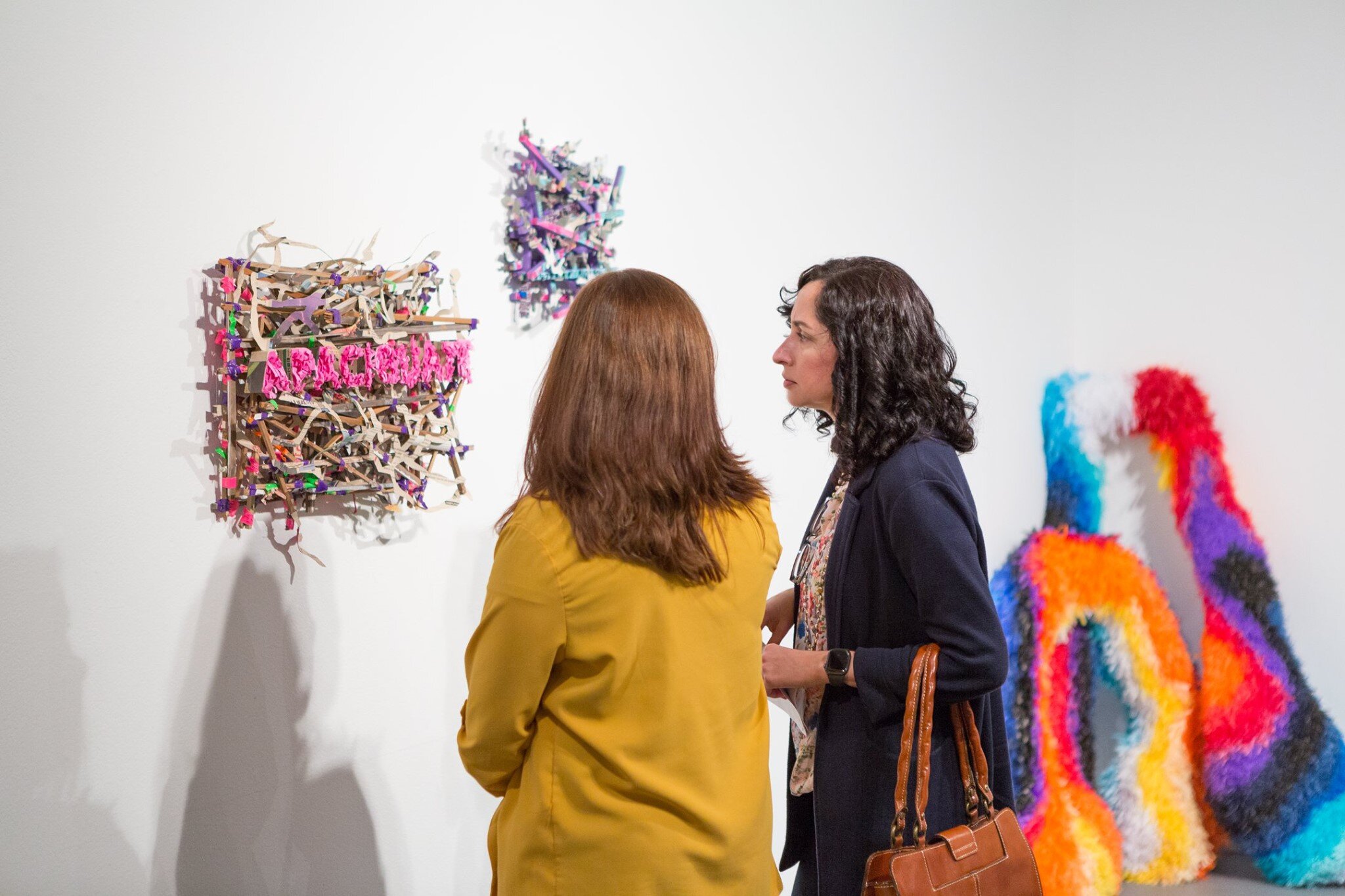



















Piñatasthetic
Justin Favela, Josué Ramírez & Giovanni Valderas
Exhibition Dates: January 17 – February 29, 2020
Opening Reception: 6 – 9 PM Friday, January 17, 2020
Artist Talks: 7:15 PM I Main Gallery
PRESS - Preview - Five small Houston art museums that think big
PRESS - Glasstire - Top Five: January 16, 2020
PRESS - Houston Chronicle - Preview Picks: Houston Iranian Film Festival, ‘Stomp’
PRESS - CultureMap Houston - 11 vivid and eye-catching January events no Houstonian should miss
PRESS - Five Small Houston Art Museums that Think Big
December 18, 2019. Houston, TX - Art League Houston (ALH) is proud to present Piñatasthetic, an installation of work by Artists Justin Favela, based in Las Vegas, Nevada; Josué Ramírez, based in Brownsville, Texas; and Giovanni Valderas, based in Dallas, Texas. Selected by ALH’s Artist Advisory Board during the Open Call process, Piñatasthetic is a three-person exhibition exploring the use of the piñata technique and process as a symbol and cultural staple of Latinx identity.
The purpose and meaning of the piñata has developed from an indigenous practice to a tool of religious conversion and now to its current role in celebrations and parties. The lasting popularity of piñatas throughout time and their inclusion into mainstream popular culture as a signifier of Latinidad shows the importance behind the working-class craft. The incorporation of the piñata into pop culture, however, has led to appropriation that manifests itself in stereotypical ways, usually making piñatas part of the punch line. This diminishes the practice, tradition and worth of a craft that carries deep meaning and history in the Latinx collective conscious.
In an effort to create counter narratives to popular culture and to continue expanding the notion of the piñata through the lens of fine art, Piñatasthetic is a group show focusing on the contemporary use of piñata-making techniques, material and methodology. Piñatasthetic presents the ways in which three Latinx artists allude to, explore, portray, and develop the definition and construct of the piñata. The overt aesthetic of the piñata is what connects the exhibition, but the works are representations of the individual artists’ personal conversation on the topic.
Artist Justin Favela of Las Vegas is stylistically inspired by the piñata, which he uses to critique absurd stereotypes through exaggeration. Favela’s large-scale installations allude to wide-ranging inspirations from Mexican artist José María Velasco, low riders, and Selena, to food from his favorite hometown diners. Whatever the context, Favela’s work seeks to create a dialogue about identify and home, as well as the perceptions of “high art” with the use of craft materials.
Rio Grande Valley artist Josué Ramírez uses piñata techniques to recreate everyday snapshots of personal moments in bright, fringed collages. The images draw nostalgia for the ephemeral and are an ode to border life and culture through portraiture and piñata making. Ramirez also uses piñata techniques in immersive large-scale installations of psychedelic piñata landscapes. In Piñatabstract, Ramirez seeks to disconnect piñatas from symbolism and iconography and focus on the repetition of techniques to create momentary worlds.
Dallas-based artist Giovanni Valderas uses piñata techniques through various aspects in his work. Valderas’ site specific installation Tradecraft, for example, combines bilingual Spanish sayings and piñata making to create multicolored dilapidated signs and structures that highlight the convoluted relationships between the Latinx and American cultures. Currently Valderas is working on a grassroots project based in the West Dallas Oak Cliff Neighborhood. Quien Manda explores piñata-making as a tool for Latinx political engagement and community empowerment against gentrification. Valderas uses piñatas to underscore the fragility of affordable housing in the city but also to interact with and highlight the minority communities that are most impacted by forced displacement.
Through featuring the varying use of the piñata as explored by these three Latinx artists, Piñatasthetic demonstrates the continuing development and growth of the construct of the piñata and provides counter narratives to the appropriation of a craft and symbol that portrays Latinidad.
ALH extends our gratitude to On Services a GES Company for their support of this exhibition.
ABOUT THE ARTISTS
Justin Favela is an artist based in Las Vegas, Nevada. Known for large-scale installations and sculptures that manifest the artist’s interactions with American pop culture and the Latinx experience, Favela has exhibited his work both internationally and across the United States. Recent commissioned installations artwork at the Denver Art Museum, Denver, Colorado, and Crystal Bridges Museum of American Art, Bentonville, Arkansas. His latest major project, Puente Nuevo, is on view in Fort Worth, Texas, at the Amon Carter Museum of American Art through June 2020. Favela is the recipient of the 2018 Alan Turing LGTBIQ Award for International Artists. Favela hosts two culture-oriented podcasts: “Latinos Who Lunch” and “The Art People Podcast.” He holds a BFA in Fine Art from the University of Nevada, Las Vegas.
Josué Ramírez, or Rawmirez, is a multidisciplinary artist working in the Rio Grande Valley along the US-Mexico border. Rawmirez graduated from the University of Texas, Austin, Texas, with a BA in Mexican American Studies. His current work investigates relationships between personal identity, meaning, and locations, particularly 'la frontera' through references of bilingualism, popular culture, Mexican imagery, traditional processes and crafts. Rawmirez was a featured artist in the 2019 Luminaria Contemporary Arts Festival and is a 2019 Creative Change Fellow. Piñatabstract is a series exploring and expanding the notion of the Latinx craft tradition of piñatería with abstract expressionism, performance and multimedia work. You can follow his work here: @raw_mirez.
Giovanni Valderas is a native of Dallas, Texas, and is the Exhibition Manager at the Fort Worth Community Arts Center in Fort Worth, Texas. Previously, he served as Gallery Director at Mountain View College, Dallas, Texas, and was Assistant Gallery Director at Kirk Hopper Fine Art, Dallas, Texas. He also served as an appointee by the Dallas City Council as Vice Chair of the Cultural Affairs Commission. Valderas graduated from the College of Visual Arts & Design at the University of North Texas, Denton, Texas, with a Masters of Fine Arts in Drawing & Painting. He has taught painting and drawing courses at the University of North Texas, Richland, and Mountain View College. Valderas is a former member of 500X Gallery, one of the oldest co-op galleries in Texas. His work has been featured in the 2013 Texas Biennial, New American Paintings magazine, (issues #108 and #132), Impossible Geometries: Curated works by Lauren Haynes at Field Projects in New York City, and 14x48.org’s temporary billboard public art project. In addition, Valderas received the Moss/Chumley Award and a micro-grant from the Nasher Sculpture Center in Dallas, Texas, for his guerrilla site-specific project. In 2018, Valderas resigned from his reappointment to the City of Dallas, Cultural Affairs Commission having served under Councilman Omar Narvaez to run for Dallas City Council with plans to represent the neighborhood he grew up in. Valderas led a grassroots campaign where he placed a strong second.


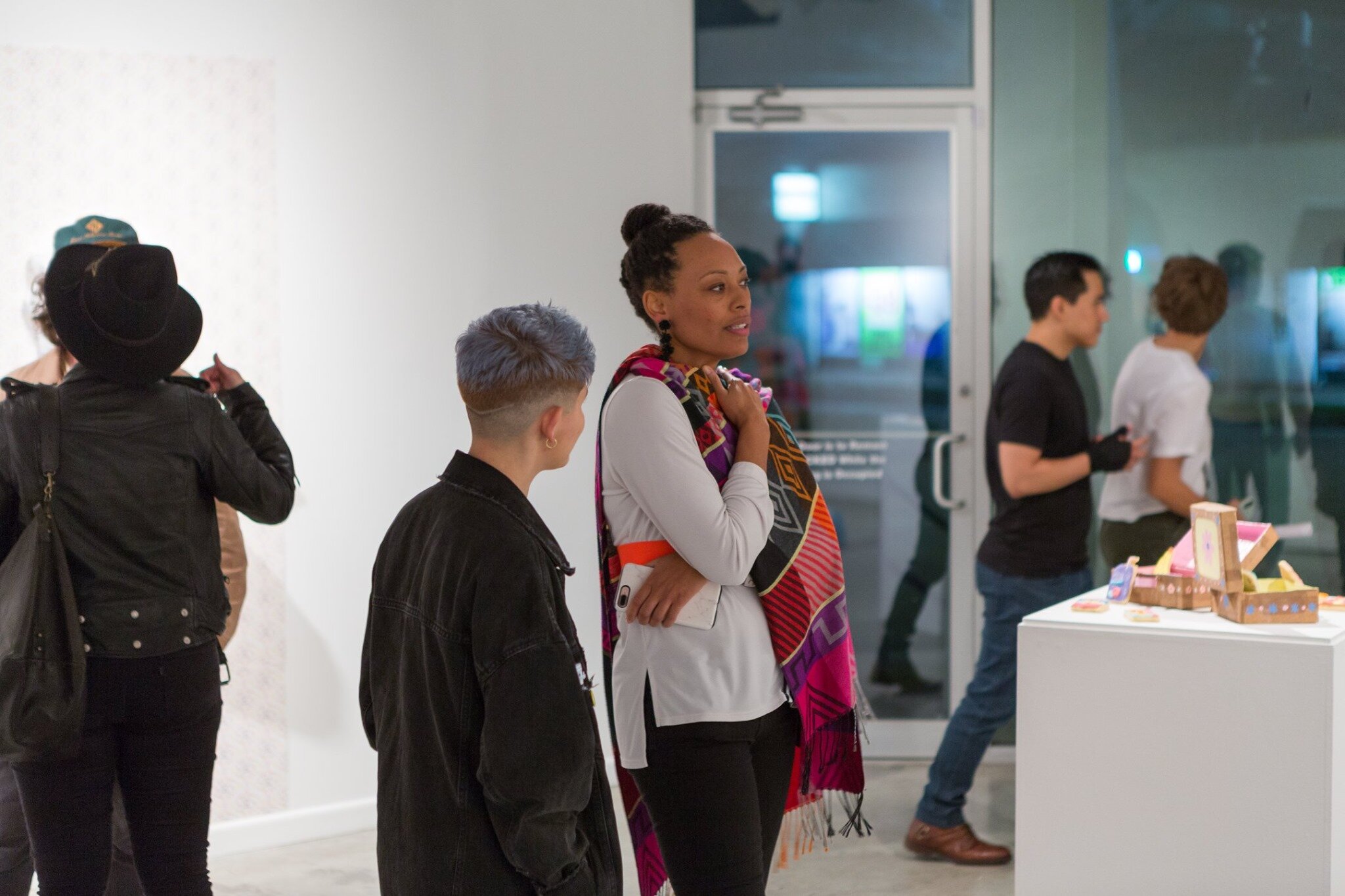





















teenage cream
Alex Guillen & Dana Suleymanova
Exhibition Dates: January 17 – February 29, 2020
Opening Reception: 6 – 9 PM Friday, January 17, 2020
Artist Talks: 6:45 PM I Front Gallery
December 18, 2019. Houston, TX - Art League Houston (ALH) is proud to present teenage cream, an exhibition of work by Artists Alex Guillen, based in Brooklyn, New York, and Dana Suleymanova, based in Philadelphia, Pennsylvania. Selected by ALH’s Artist Advisory Board during the Open Call process, teenage cream is a two-person exhibition featuring recent ceramic, sculpture and new media work by Guillen and Suleymanova.
Previously based in Texas, Guillen and Suleymanova both work primarily in drawing, sculpture, and new media. They combine crude textures and playful objects to create personal narratives that unpack presentations of femininity and its commercialization in an increasingly digital age. Using seemingly childish aesthetics, the artists create digital versions of the analog and analog versions of the digital to explore how those objects can exist in an in-between state.
Guillen’s work merges visual and anecdotal memories of adolescent years with current experiences and emotions of young adulthood as a method of self-reflection, drawing visual and conceptual parallels between the two. For Suleymanova, the childlike becomes a jumping off point to think about the perceived naivety of queerness and its rejection of “growing up.” Together, Guillen and Suleymanova probe the political discourse surrounding women’s bodies, as well as the historical patronization of women, as they look for ways to claim agency of their own narratives.
ABOUT THE ARTISTS
Alex Guillen was born in Chicago, Illinois, but moved to Texas at a young age. She currently works as an artist and illustrator in Brooklyn, New York. She graduated with a BFA in Studio Art from the University of Texas, Austin, Texas (2017). Guillen uses bright colors, humor, and nostalgic imagery to illustrate and reflect on girlhood, highlighting the uncomfortable stages between adolescence and adulthood. She utilizes simple and accessible media, like hand-drawn illustrations, papier-mâché, and cute, playful stylization to create contrast with mature and vulnerable content. Guillen was awarded a residency at the Ox-bow School of Art and Artists’ Residency program in Saugatuck, Michigan (2017).
Dana Suleymanova was born in Tashkent, Uzbekistan, in 1996, and currently lives and works in Philadelphia, Pennsylvania. Her artwork oscillates between sculpture, video, and performance. Suleymanova received her BFA from The University of Texas, Austin, Texas (2018) and has exhibited in the FringeArts Festival, Philadelphia, Pennsylvania; Fusebox Festival, Austin, Texas; The Visual Arts Center, Austin, Texas; The Museum of Human Achievement, Austin, Texas; BOX 13 ArtSpace, Houston, Texas; Private Eye Gallery, Houston, Texas; and Aurora Picture Show, Houston, Texas. Her practice is a playful dissection of power structures through objects, comedy, and performativity. Many of the themes in the work explore the intersection of capitalism and gender, while unpacking the often clunky navigation of being a queer immigrant.









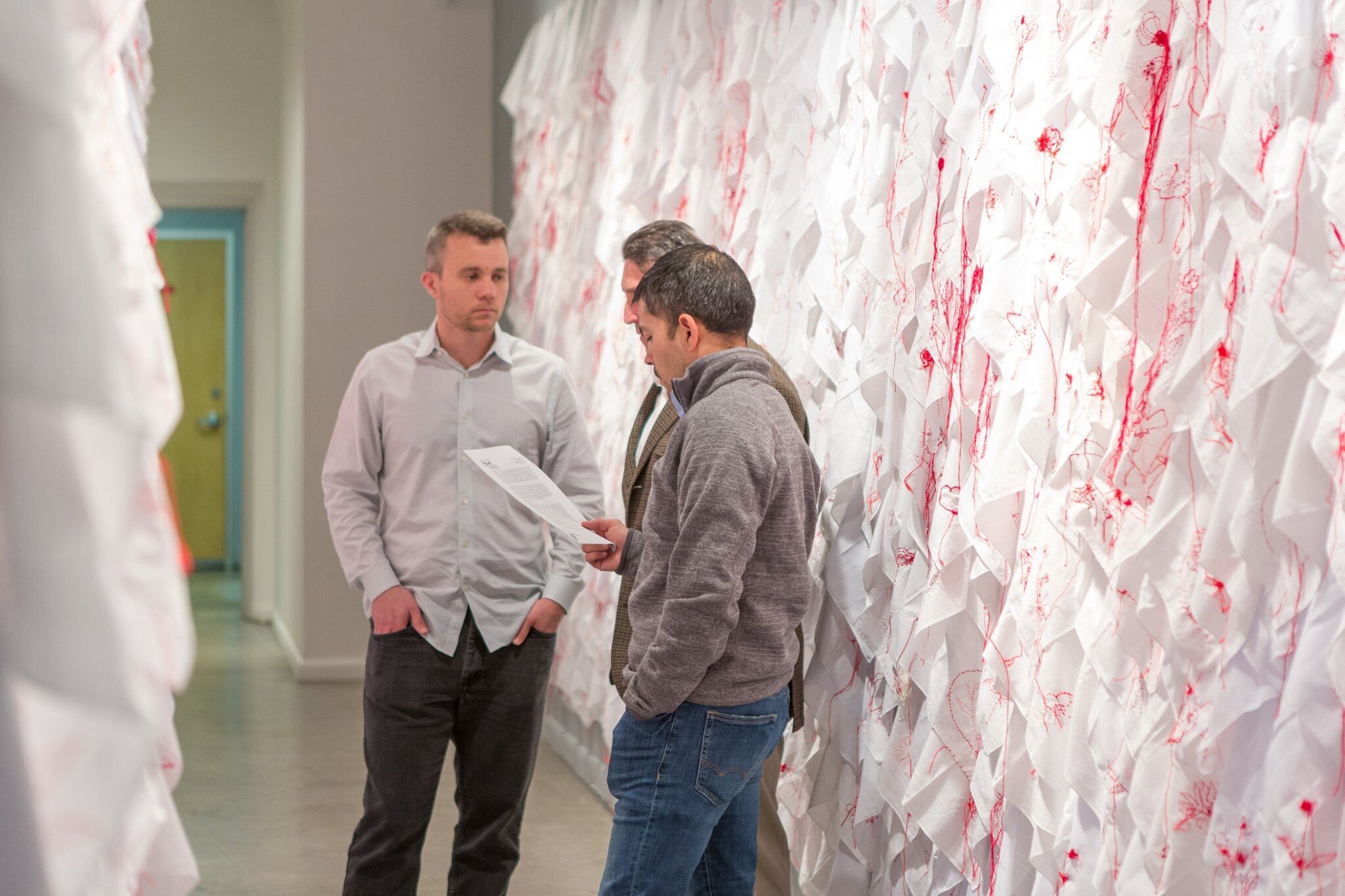








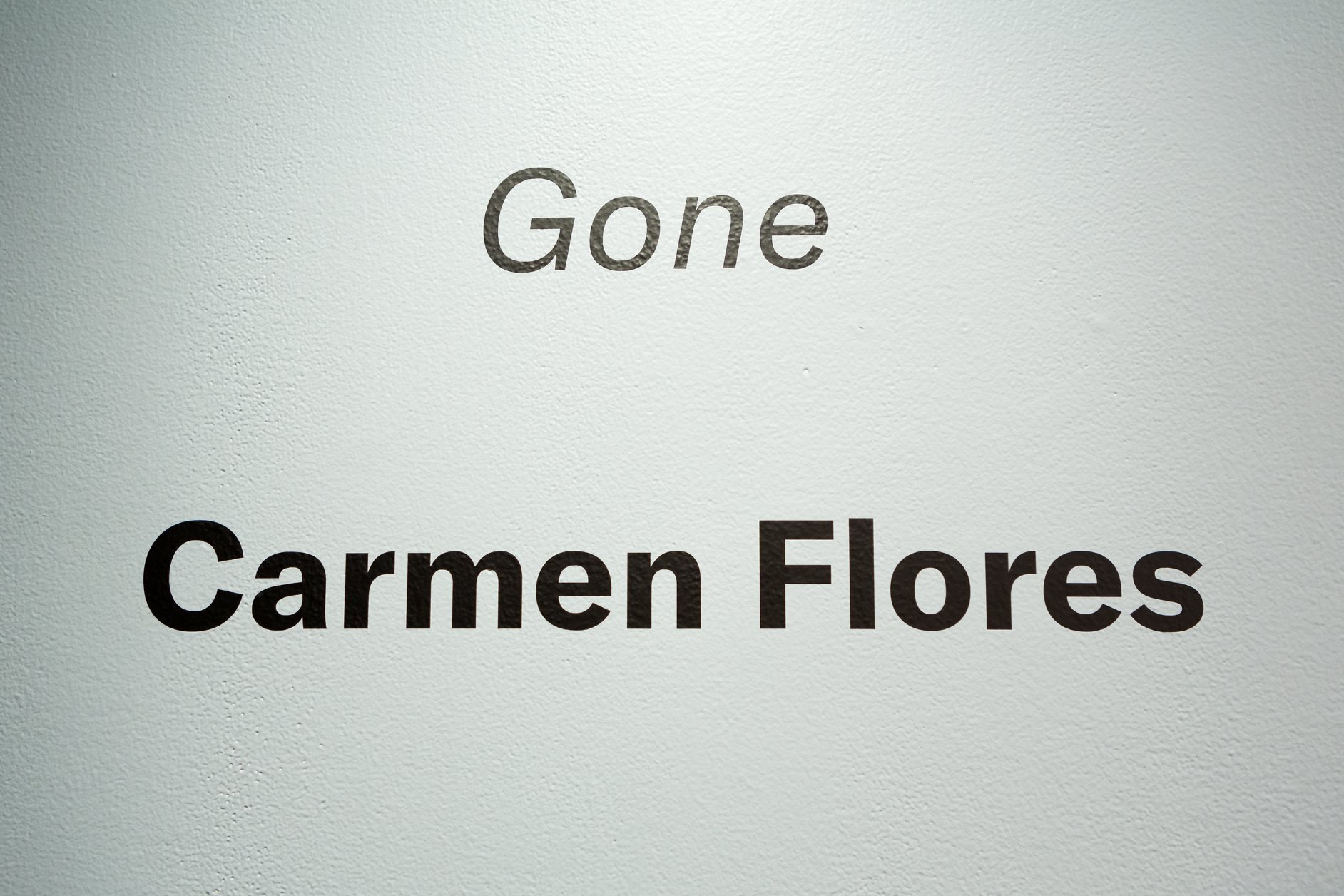
Gone
Carmen Flores
Exhibition Dates: January 17 – February 29, 2020
Opening Reception: 6 – 9 PM Friday, January 17, 2020
Artist Talk: 6:30 PM I Hallway Gallery
December 18, 2019. Houston, TX - Art League Houston (ALH) is proud to present Gone, an installation of work by Texas based Artist, Carmen Flores. Selected by ALH’s Artist Advisory Board during the Open Call process, Gone is an ongoing project exploring the proliferation of violence (both intentional and unintentional) that is prevalent in our contemporary society. In her installation, Flores’ creates delicate, intimate drawings of flowers with red pencil, graphite and thread on white handkerchiefs. These flowers symbolically reference the temporal nature of life that is a shared human experience.
Flores states, “In June 2017, the American Academy of Pediatrics published the paper “Childhood Firearm Injuries in the United States” revealing that nearly 1300 children are killed annually by gun violence in the United States. The numbers are the result of data collected from 2002 to 2014. Firearm related deaths are the third leading cause of death overall among children in the United States. In this installation, each handkerchief represents one child killed by a gun. If we properly educate and make people aware of these alarming numbers, deaths of children by firearms can be reduced and be avoided.”
Every flower in Gone is different. They tell the stories of those that are no longer with us and stand as a symbol for a life that is now gone. Handkerchiefs are often adorned with decorative, floral motifs. Flowers are also dominant features in funeral homes at burials and ceremonies. Flores’ media of red colored pencil and graphite is purposefully selected for its transient, elusive qualities, referencing the vulnerability of violence. The piercing motions of the embroidery process symbolically reference bullets as they injure a body. Flores intentionally leaves her threads exposed alluding to the passing spirits of the deceased and serving as a tool for recollection of their lives.
ABOUT THE ARTIST
Carmen Flores is an artist living and working in Richmond, Texas. Her drawings reference the adaptation and proliferation of violence in our society. Images in her work include outlined silhouettes of people shooting, shot and wounded; and diagrams of guns and bullets accompanied by text. The inclusion of flowers as a symbol of temporal life is also recurrent in her much of her oeuvre. She sources imagery from newspapers, police reports and safety tutorials. Her drawings are executed using graphite, red colored pencil and thread. Flores was born and raised in Culiacan, Mexico, a small city with high crime and violence statistics. She earned her BFA from Universidad de las Americas-Puebla, Mexico (2003), and an MA in Painting from Savannah College of Art and Design, Georgia (2010). Flores is a two-time recipient of the FOECA Artist Grant and MASIN 12x12 Artist Grant in Mexico. Her work is featured in numerous collections including the Museo de Arte de Sinaloa; Museo de Arte de Mazatlan; and Banco del Bajio, Mexico. Selected exhibitions include shows at Yale University, New Haven, Connecticut; Mexic-Arte Museum, Austin, Texas; Lawndale Art Center, Houston, Texas; Anya Tish Gallery, Houston, Texas; Box 13 ArtSpace, Houston, Texas; Museo de Arte Sinaloa, Mexico; and Centro de las Artes, Monterrey, Mexico.

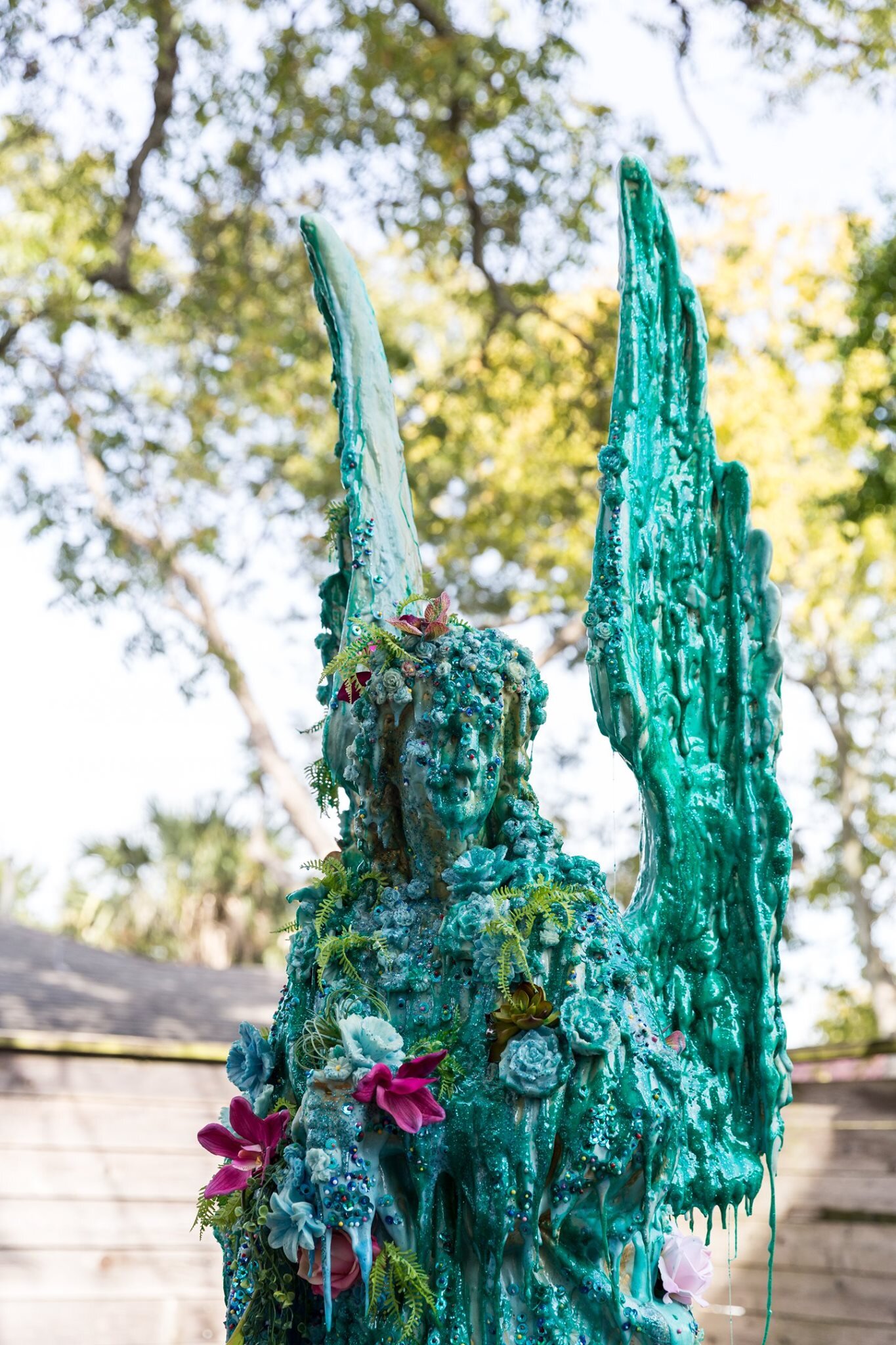
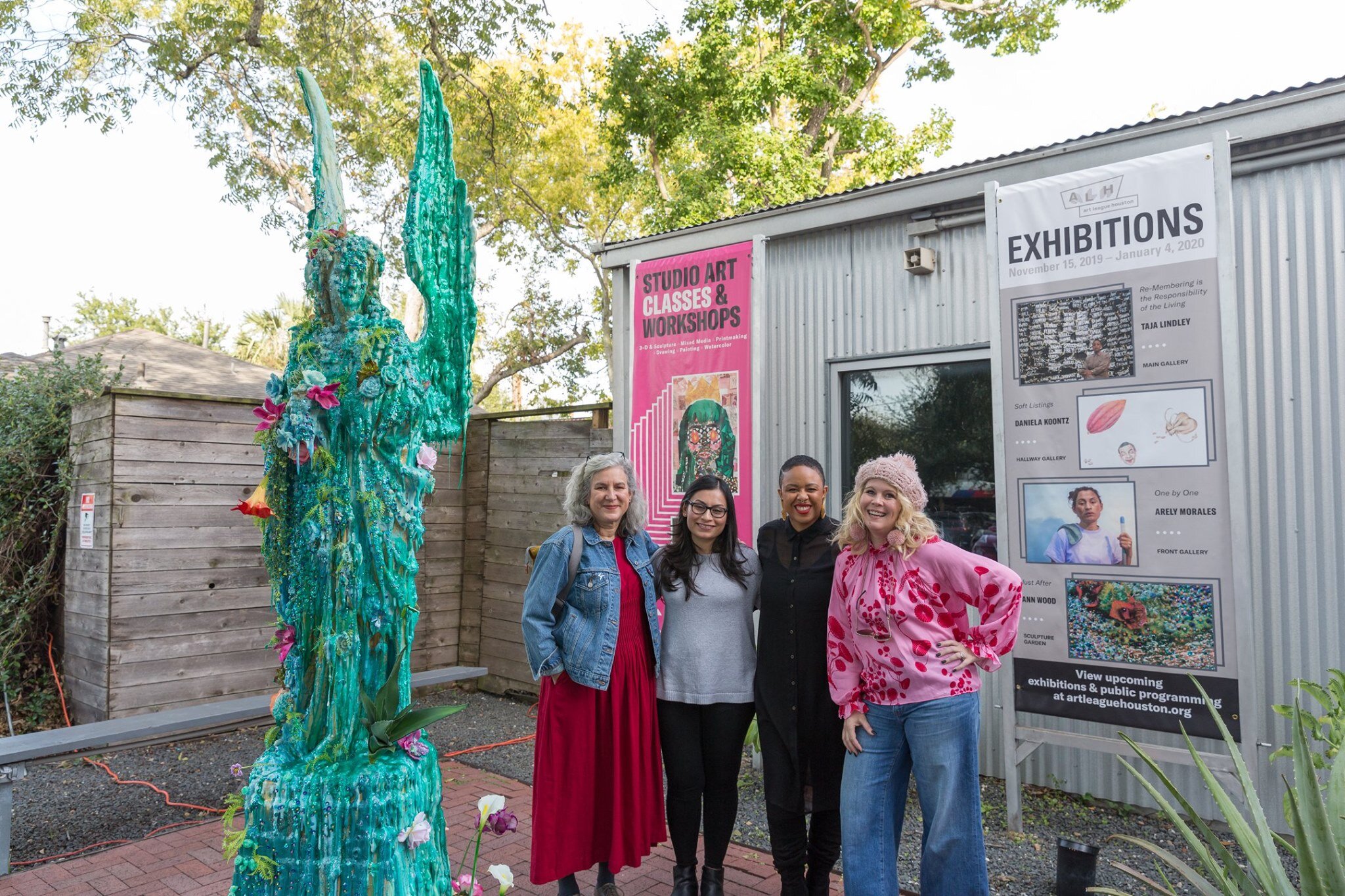




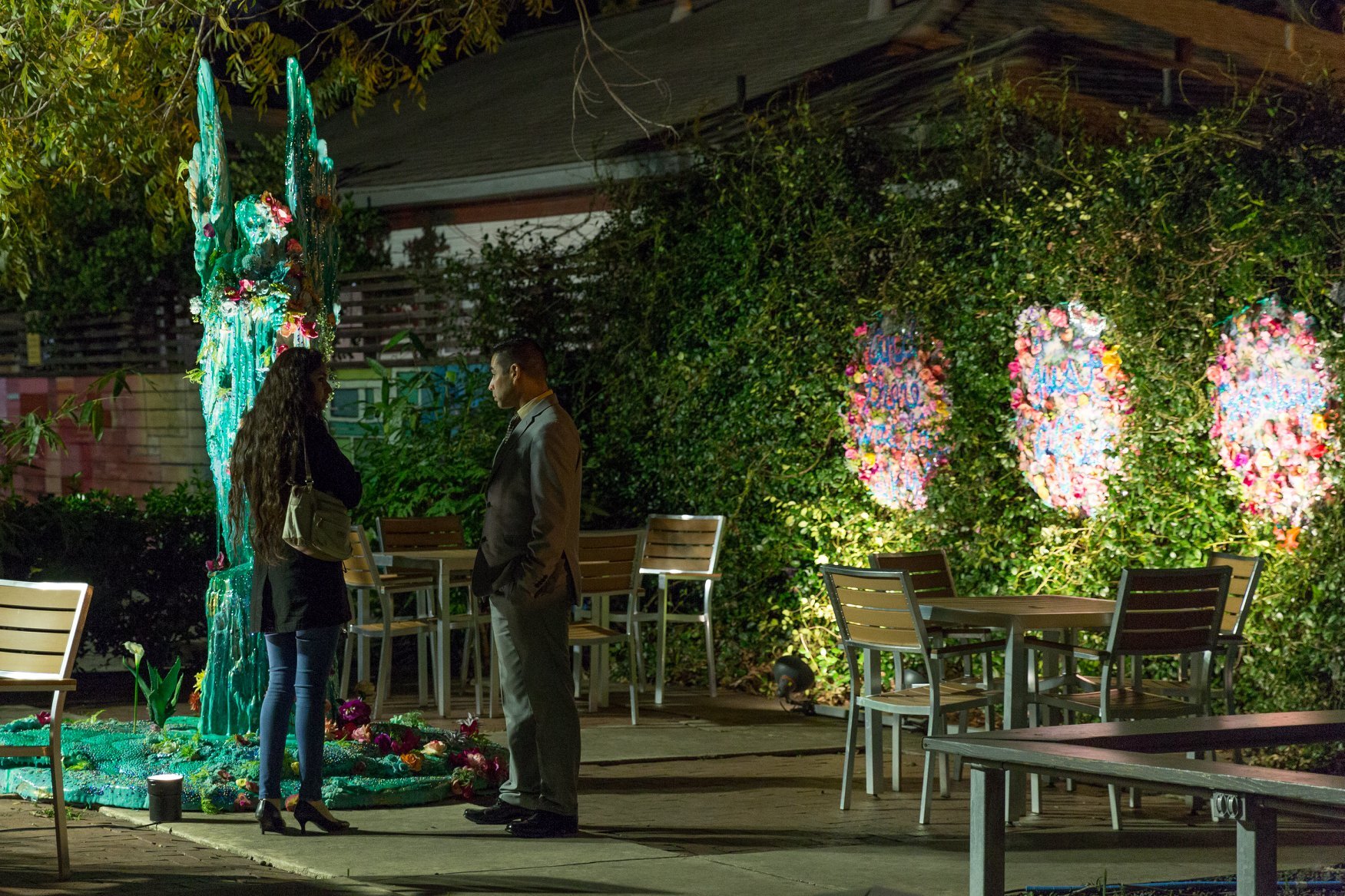

















Just After
Ann Wood
Exhibition Dates: November 15, 2019 – February 29, 2020
Opening Reception: 6 – 9 PM, Friday, November 15, 2019
Artist Talk: 1:15 PM, Saturday, November 16, 2019 I Sculpture Garden
PRESS - CultureMap Houston - 8 colorful and eye-catching November art events no Houstonian should miss
Art League Houston (ALH) is proud to present Just After, a new, site-specific installation by Galveston based Artist Ann Wood. Incorporating aesthetic elements of Rococo and Baroque excess combined with Gothic style funerary monuments, Wood’s installation visually recalls Victorian figurative grave markers found throughout Galveston’s historical cemeteries. In the summer of 2016, Wood’s parents died within six weeks of each other. She is an only child and sat with both of them as they passed. Wood recalls that it was not peaceful like she expected from watching movies and reading books – it was messy and gross and heart wrenching. Then, instantly, she owned another house in a different state, two more cars, a small dog, and a lot of stuff – boxes and storage units and closets and attics full of stuff. Wood lived her entire life not knowing that most of that stuff existed, and suddenly had to know what was in every box and drawer. Then she had to deal with what was in every box and drawer. “Should I keep it? Should I shred it? Should I sell it? Does someone want it? This experience has shaped my recent creative work,” states Wood. “I have always been interested in domesticity, death as an abstract idea, decadence, decay, and attraction – repulsion as a reaction to visual cues. I have combined those interests with a Rococo and Baroque aesthetic, but since this personal experience, I have become increasingly interested in domestic objects and their potential to be sculpture. I have been thinking of the stuff, the process of dying as I have now personally (not abstractly) experienced it, and how we commemorate that experience.”
Other major influencing factors in Wood’s work are words and phrases. As she works, Wood frequently gets a phrase from a book, poem, or song stuck in her head. Sometimes she comes up with her own short phrases. She will pin these to the studio wall and live with them as she works. Sometimes they influence the work, but recently they have started to visualize into actual pieces. Process and materials are also important to the concept and aesthetics of her work. Both her two- and three-dimensional works rely heavily on embroidery, scrapbooking materials, thread, and kitsch “craft-store” objects like fake flowers, sequins, pom-poms, fake jewels, and puffy paint. In the spirit of dichotomies, she often contrasts these “female” items with “masculine” industrial materials like rubber, plastic, foam, hunting decoys, and taxidermy mannequins. Using embroidery and other craft store items as her media, her two-dimensional work reinterprets male-created historic painting into a contemporary and feminine tapestry. Her “frosting” coated, large-scale sculptures twist the idea of monument into feminine super-cakes.
ABOUT THE ARTIST
Ann Wood was born and raised in Northern California, and currently lives and works in Galveston, Texas. Wood received a BFA in Art with an emphasis on painting and drawing from California State University at Chico, Chico, California. She earned an MFA in painting from the University of Texas at San Antonio, San Antonio, Texas. She works consistently in both two and three dimensions, including site-specific installation. Wood’s upbringing in Northern California plays a large part in her work. Her mother was a florist for the San Francisco flower market and her father’s family owned and ran one of the largest ranches in Northern California. Nature and the cycle of life and death were a big part of her early, formative years. In college she developed a passion for art history – specifically Rococo and Baroque works. In her current work, these two influences combine with a guilt-ridden love of craft store kitsch.
Wood has exhibited at institutions across Texas and the United States including The Dallas Center for Contemporary Art, Dallas; The University of Texas at San Antonio Art Gallery, San Antonio; Blue Star Contemporary, San Antonio; and Anya Tish Gallery, Houston. Recent solo exhibitions include exhibitions at Big Medium, Austin; Art Museum of Southeast Texas, Beaumont; Galveston Arts Center, Galveston; Lawndale Art Center, Houston; Women and Their Work, Austin; The University Art Gallery at Dartmouth, Massachusetts; and Kirk Hopper Fine Art, Dallas. She featured site-specific installations at the Texas Contemporary Art Fair in 2012 and 2013. In 2018 she was invited to participate in Sculpture Month Houston at the Silos at Sawyer Yard where she installed a site-specific working fountain. She has shown internationally at Centro Cultural Border in Mexico City.
Wood has been reviewed in several publications and online forums including Glasstire, The Austin Chronicle, The Houston Chronicle, and The Dallas Morning News. She was interviewed on NPR’s The Front Row arts radio show in 2010, and she was one of 6 Houston artists featured in the Houston publication PaperCity Magazine as up and coming creatives to watch in 2013. Her exhibition Violent Delights at Women and their Work was declared one of the top 10 art moments in Austin by both the Austin Chronicle and the Austinist in 2012. In October of 2018, her exhibition Quick and Quiet at Big Medium in Austin was featured on Glasstire’s Top 5 list as one of the top 5 exhibitions in Texas for that period. In December of the same year, Quick and Quiet was declared one of the top 10 art events in Austin by the Austin Chronicle in 2018.


